Last night's libation...

|
Sponsored by |
|---|
|
|
|
-
Need help navigating the forum? Find out how to use our features here.
-
Did you know we have lots of smilies for you to use?
You are using an out of date browser. It may not display this or other websites correctly.
You should upgrade or use an alternative browser.
You should upgrade or use an alternative browser.
Lunacy Wine and Spirits
- Thread starter BD9
- Start date
deep_meditation
Well-Known Member
Anyone ever make this or just regular limoncello? I picked up a bottle of Lemoncello from the liquor store and it had yellow food coloring in it and the scent reminded me of lemon pledge. I figured I would try and make my own instead.
If you have access to Everclear (either 189 or 190) you can make it. I think lower proofs are somewhat ok but you might need to let it steep a bit longer.
Here's the creme de meloncello variation:
If you have access to Everclear (either 189 or 190) you can make it. I think lower proofs are somewhat ok but you might need to let it steep a bit longer.
Here's the creme de meloncello variation:
Coffee and Baileys; an early morning fishing trip essential!but personally I like coffee and baileys.
bulllee
Well-Known Member
https://www.atlasobscura.com/articl...-70392897&mc_cid=6282f8ad55&mc_eid=c6e43d0902
11 Cocktails From Around the World That You Can Make at Home
You can’t travel, but you could probably use a drink.
BY LUKE FATERMAY 21, 2020
11 Cocktails From Around the World That You Can Make at Home
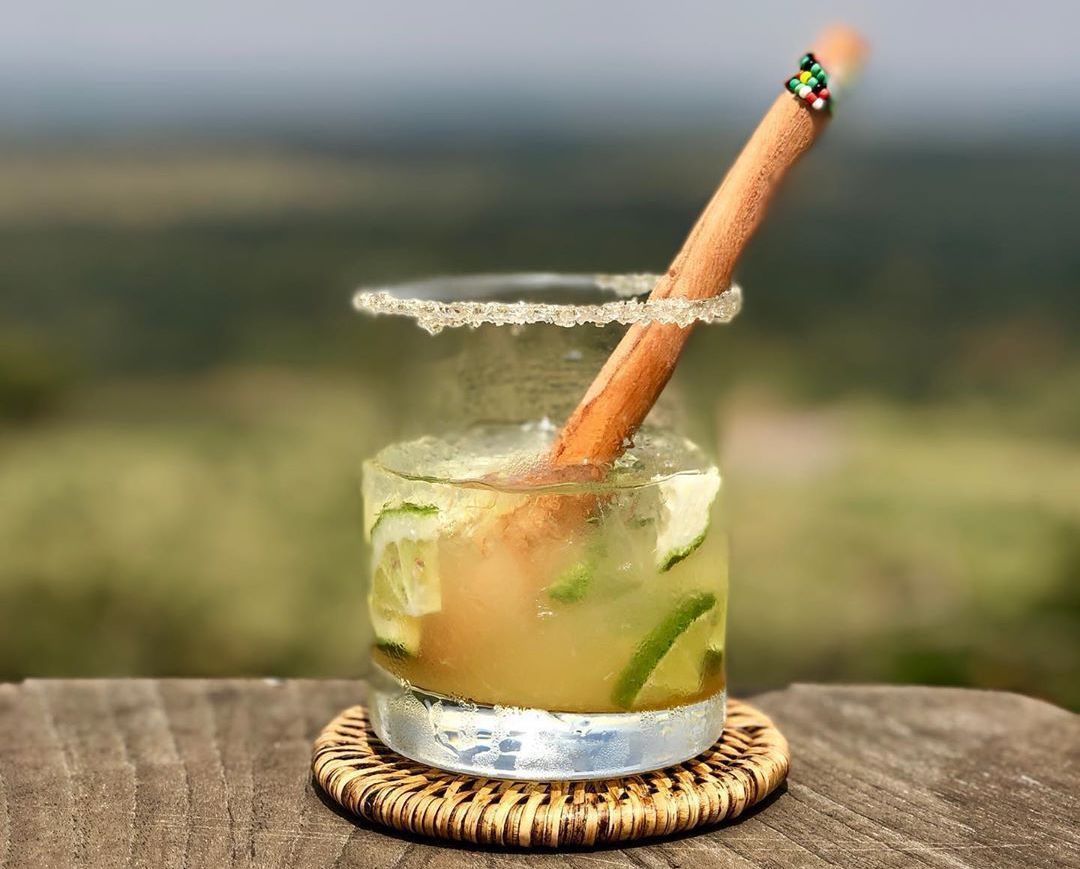
The dawa is Kenya's answer to the caipirinha. MJ_APOLLO/USED WITH PERMISSION

Wonder From Home
MAYBE YOU WERE SUPPOSED TO go to New Orleans this summer to see what Nicolas Cage’s pyramid tomb was all about. Perhaps it was Kenya to visit a mansion for giraffes. Or else it was Myanmar to see the island that inspired Neverland. We may not get to travel the world this summer as planned, but that doesn’t mean we can’t drink like it.
Dust off the cocktail shaker, push aside the regulars at the front of your liquor cabinet, and dive into a world of beverages beyond your go-to nightcaps. From Philadelphia social clubs to the meat stalls of Addis Ababa, the drinks on this list tell stories that can transport you. For the most part, they can be made with ingredients you already have or can pick up on your next grocery-store run, as well. There’s a frosty, accidental Oklahoma cocktail, a Mexican brew made from up-cycled pineapple peels, and a Slovakian Christmastime favorite that unironically includes bacon.
The flights are canceled and the bars are closed. Belly up to your counter, make a drink, and get yourself out there.
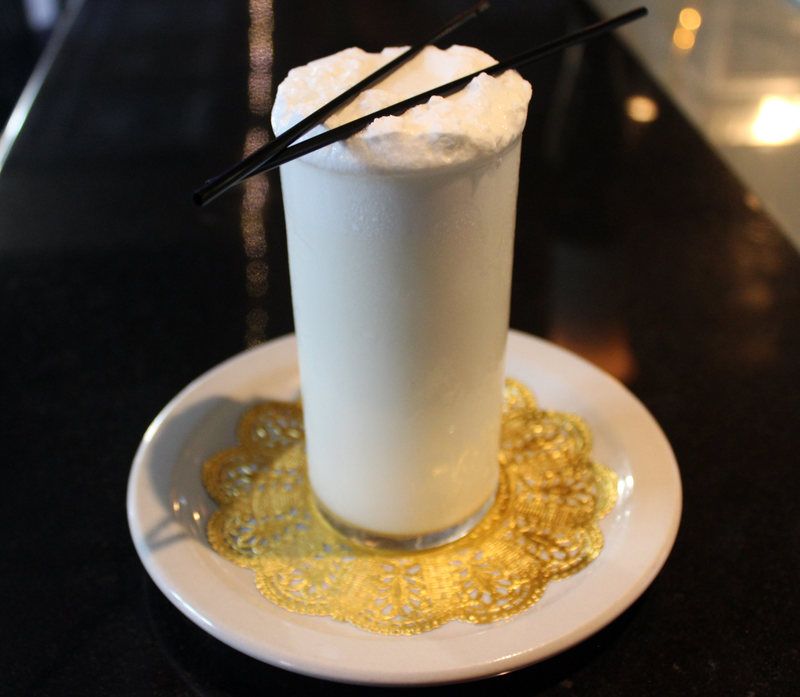
The Ramos Gin Fizz is best made while sleeveless. WSHENTON/CC BY-SA 3.0Ramos Gin Fizz
New Orleans, LA
If you want to make Henry Ramos, the Father of the Gin Fizz, happy, you’ll shake his prized, century-old variation for a full 12 minutes, until the gin, dairy, and citrus conspire to betray a sip that is as frothy as it is floral. Most experts today insist five minutes is sufficient.
RELATED
Make a Colonial American Cocktail With Ale, Rum, and Fire
The smoky, creamy Hot Ale Flip is a testament to crude ingenuity.
Read more
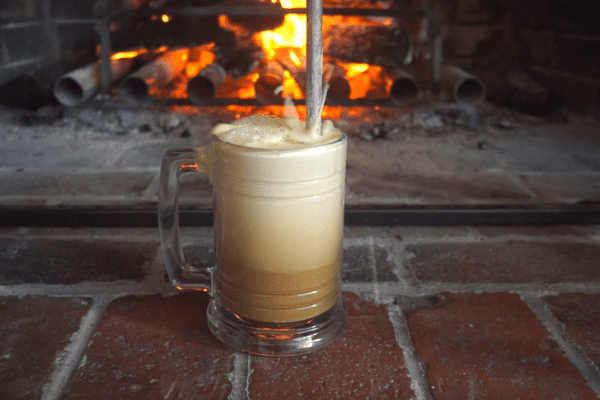
However long Ramos’s designated “Shaker Boys” spent on each drink, you wouldn’t have wanted a seat at the bar during 1915 Mardi Gras, when 35 of them shook feverishly from day to night at his nightclub, The Stag Cafe, and still failed to keep up with demand.
If you’ve got some gin in your cabinet and time on your hands, you too can party like it’s 1915. Toss 2 ounces of gin, ½ ounce of heavy cream, ½ ounce each of lemon juice and lime juice, ¾ ounce of simple syrup, ½ teaspoon of orange flower water, and an egg white into a shaker, and shake anywhere from 5 to 12 minutes. Add ice and shake again to get the now-silky concoction cold. Serve with a splash of club soda.
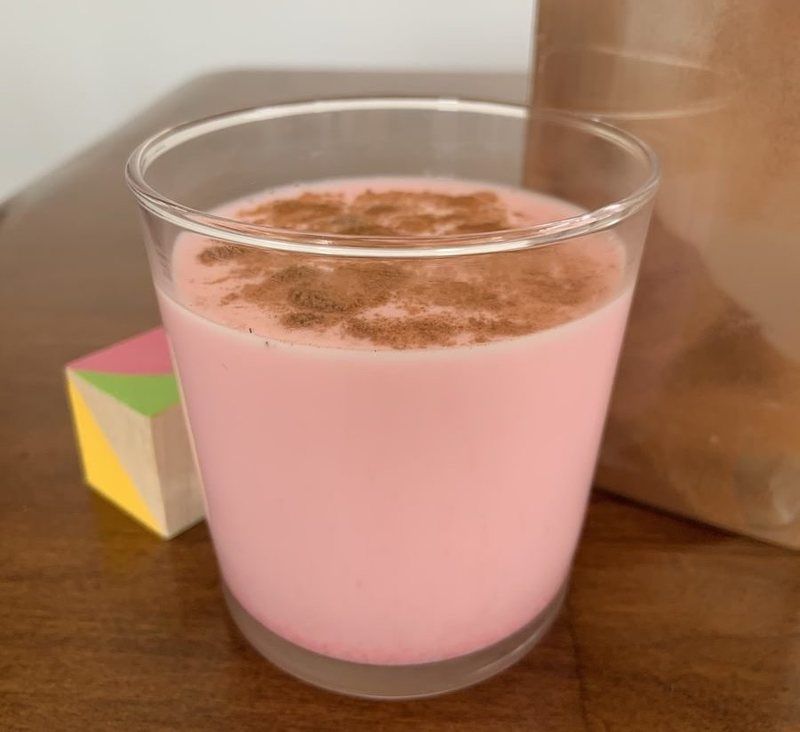
This creamy cocktail is one thing college students and the military can agree on. WINNIE LEE FOR GASTRO OBSCURAPanther Milk
Barcelona, Spain
You may think college students and the military go together about as well as gin and milk, but this century-old Spanish cocktail is here to show you they can coexist—and you don’t need to milk a panther to make one yourself.
Panther Milk, or Leche de Pantera, was created by an elite Spanish military unit in the 1920s as a cocktail that could be mobilized quickly and easily. Calling for a simple mix of gin, condensed milk, and water, the drink helped keep drab, far-flung dispatches a bit more colorful.
The drink fell into obscurity by the middle of the 1900s, but was revived in 1975 when a veteran of Spain’s military opened a Barcelona bar selling the long-lost Panther Milk. A competing bar caught wind of the fad and added a touch of grenadine for color, birthing the drink’s signature pink. It was overwhelming demand from nearby college students that eventually put the cocktail back on the map.
Whether you’re pro-military, pro-pink, or pro-actively looking for a new way to drink gin, you can make Panther Milk at home, with this recipe adapted from Steve the Bartender: Combine 1 ounce of gin, 1 ounce of white rum, 1 ounce of condensed milk, 5 ounces of milk, and a teaspoon of grenadine for that splash of pink color. Shake well with ice, strain into a glass, and sprinkle with cinnamon.
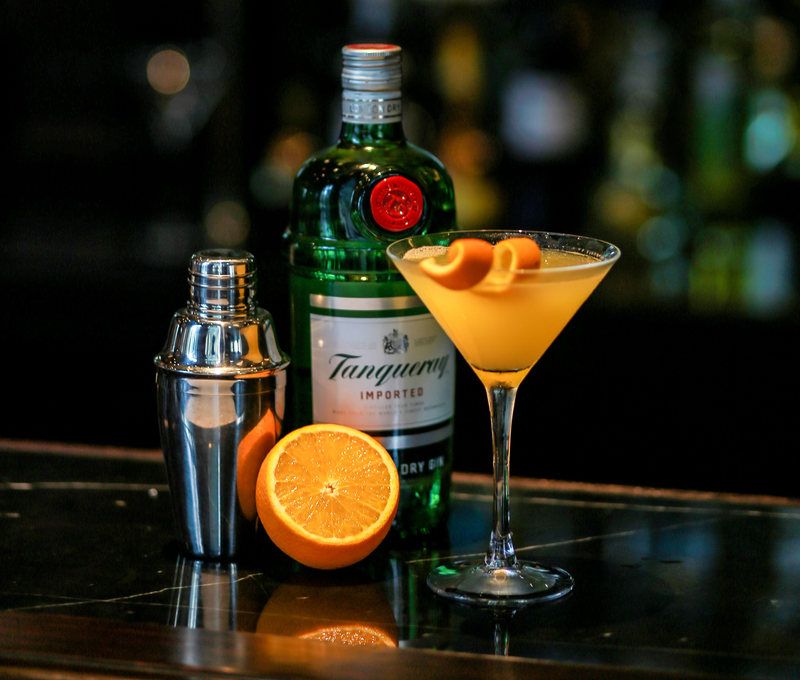
The Pegu Club cocktail may make a gin-drinker of you yet. COURTESY OF THE STRAND HOTEL YANGONPegu Club Cocktail
Yangon, Myanmar
Perhaps the only enduring positive outcome of 124 years of British rule in Myanmar (previously known as Burma) was this cocktail. The bitter, citrusy gin drink sent refreshing chills down the sweaty napes of many military officers sweltering in the Pegu Club, an expansive, Victorian-style gentleman’s club on the outskirts of Yangon that could have been called a sore thumb if it were remotely as useful.
As the British empire receded, the drink became popular throughout the world, or at least the world’s cocktail bars. The sun now sets on England; this cocktail, less so. Mix 2 ounces of gin, ¾ ounce of orange liqueur, ½ ounce of lime juice, and 2 dashes of Angostura bitters in a shaker with ice and shake well. Strain into a chilled cocktail glass and serve with a lime peel.
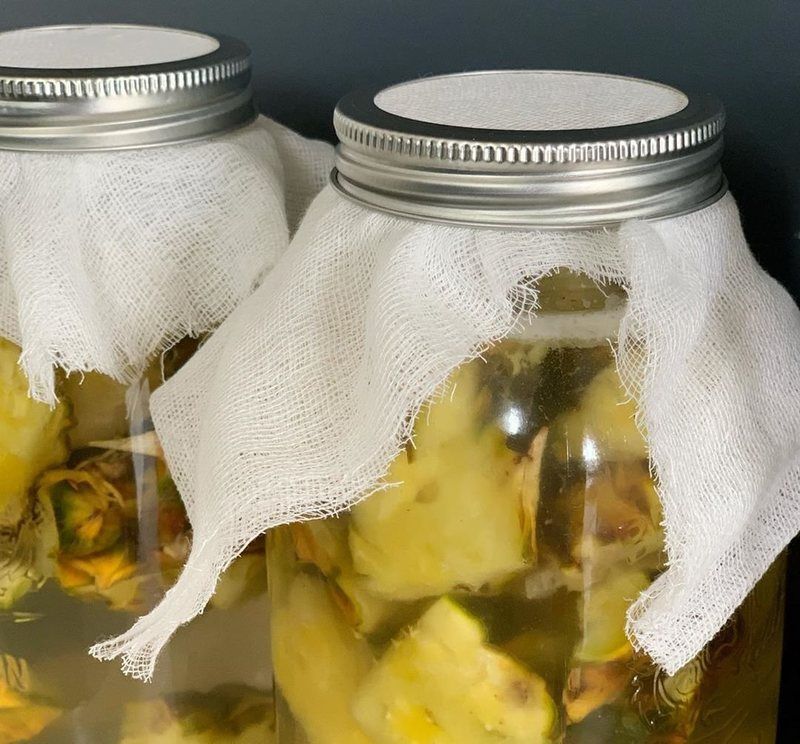
Halve your pineapple and drink it, too. TAPSANDTACOS/USED WITH PERMISSIONTepache
Mexico
When it comes to the origins of the fermented, mildly alcoholic pineapple beverage known as tepache, culinary historians are split. Some believe Aztecs were experimenting with the process long before Spanish conquest; others believe it came from conquistadors’ attempts to make New World cider with pineapples. Whoever started it, the fruity, effervescent drink is now a staple of the Mexican street-food scene.
There’s more than one way to carry out the centuries-old process, and more than one way to cause an explosion if you do it improperly as well. Start by dissolving a cup of brown sugar in two quarts of warm water. Add the peels and core from a ripe pineapple along with a stick of cinnamon and three cloves to a pitcher. Pour the sugar water into the pitcher, cover it with a cloth, and set it aside for 24 hours, or until a layer of foam has collected along the surface of the water (do not leave the mixture to ferment in a closed container or bottle—it could explode). Strain the mixture and add sugar to taste. Drink with ice.
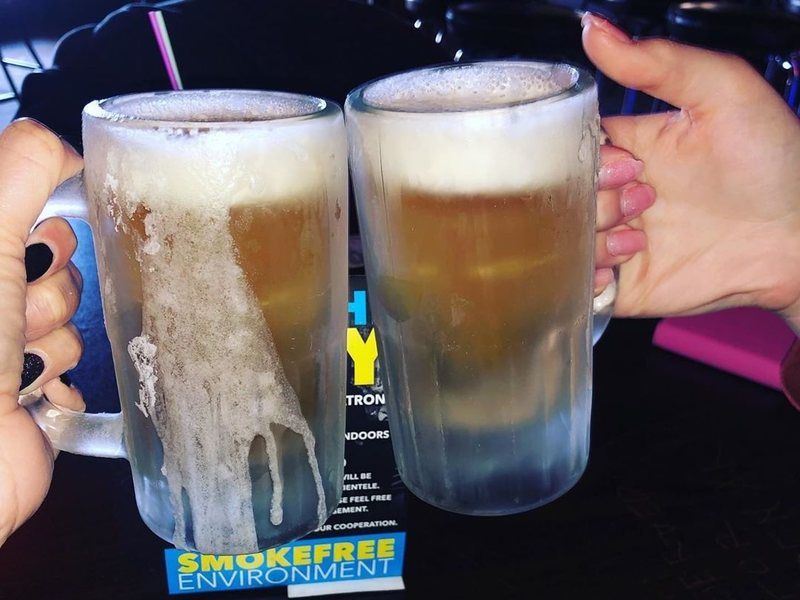
The Lunchbox is Oklahoma’s happiest accident. TAI_CRAFTBEER_GIRL/USED WITH PERMISSIONThe Lunchbox
Oklahoma City, OK
The first rendition of this frosty, citrusy, almondy “beer-tail” was an accident. The millions made afterward were not.
Edna Scott, the namesake proprietor of Edna’s Bar in Oklahoma City, Oklahoma, was trying to make a separate drink altogether when she stumbled across this summertime elixir in the late 1990s; the state of Oklahoma couldn’t be happier that she failed. “The Lunchbox” is now made throughout the South and has even spawned regional varieties.
To make the original cocktail, place a shot-glass full of amaretto inside a frosted beer mug, fill the mug three-quarters of the way with Coors Light (or any light beer you have on hand), and top it off with orange juice. As Edna’s daughter has said, the drink has “a little bit of everything you need,” assuming food and shelter are already in place.
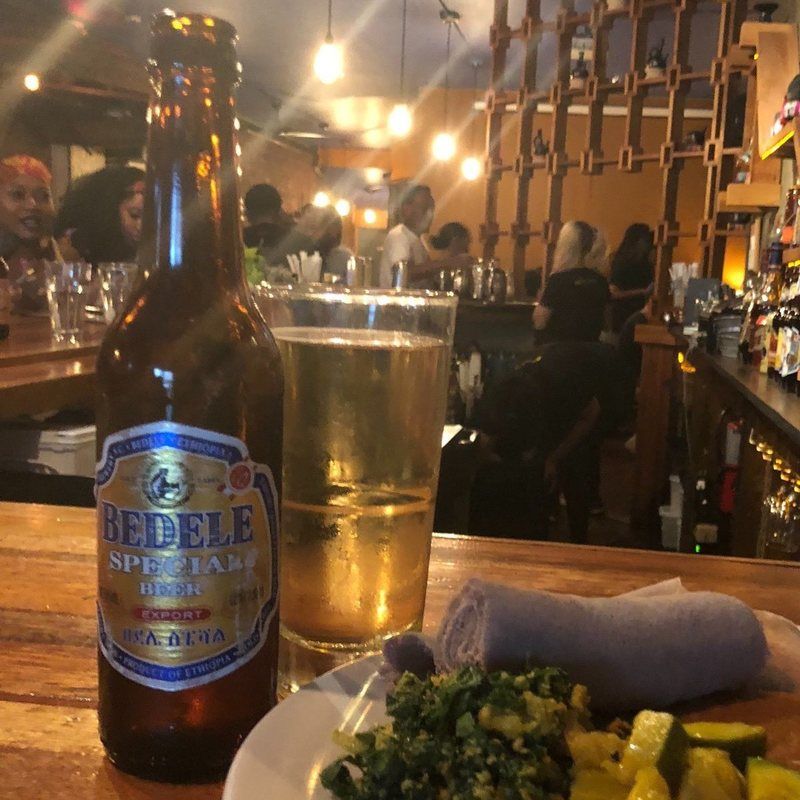
There’s no wrong way to drink Turbo. SAM O’BRIEN FOR GASTRO OBSCURATurbo
Addis Ababa, Ethiopia
If you ask 10 people in Addis Ababa how to make Turbo, you’ll get 10 different answers, and technically they’ll all be correct. That’s because rather than a recipe-based cocktail, the drink is more of a loose tradition, born among the casual, plastic-table eateries abutting the capital city’s many butcher-houses. If you’re drinking a light, sweet, boozy beverage with smoky grilled meat, you’ve got the right idea.
While there are countless variations, most involve a mixture of beer, wine, and soda. It may not be groundbreaking, but it does speak to a distinctly Ethiopian approach to gastronomy known as spris, Amharic for “mix.” Ask for a spris in a cafe, you’ll get half coffee, half tea. Ask for it in a juice bar, you’ll get a blend of the day’s fresh fruit. As for the butcher-house special, equal parts amber beer, white wine, and Sprite should do the trick.
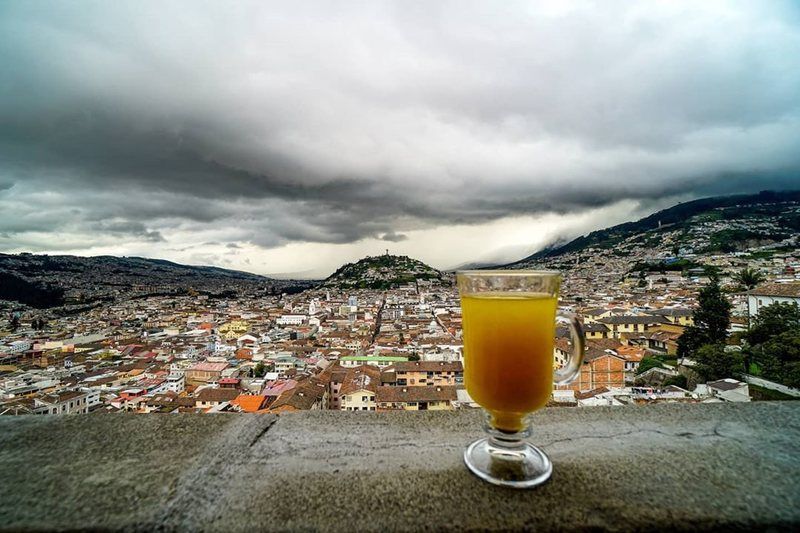
A little summertime Christmas spirit never hurt anyone. SANDRO_ITALIAN_TRAVELER/USED WITH PERMISSIONCanelazo
Andean Highlands
If anise-kissed cocktails are your thing, canelazo will be right up your alley. If it’s not your thing, there are enough other spicy, sweet flavors going on in this South American cocktail to keep you distracted. For those who’ve spent winters in the Andean highlands, however, none of this should be news.
Canelazo, from the Spanish canela, or “cinnamon,” is a popular holiday beverage along the west coast of South America where cinnamon trees are cultivated, though it’s most popular in the Ecuadorian capital of Quito (the highest capital city in the world). With such a broad range of influence, recipes vary, but the drink generally marries warm spices, citrus, and unrefined sugar in a pot of hot water alongside the cane-based, licorice-adjacent aguardiente for a cozy sip on long, breathless Andean nights.
Whether or not you have access to aguardiente, you can bring the flavor of navidad home by following these steps, adapted from a recipe by The Spruce Eats: Add 1⅓ cups of brown sugar, a juiced lime, 1 teaspoon of whole cloves, 5 cinnamon sticks, and a pinch of salt to 3 cups of boiling water, then simmer for about 7 minutes. Remove the pot from heat and add ½ cup of orange juice and 4 ounces of aguardiente or rum. Strain and serve while it’s still hot.
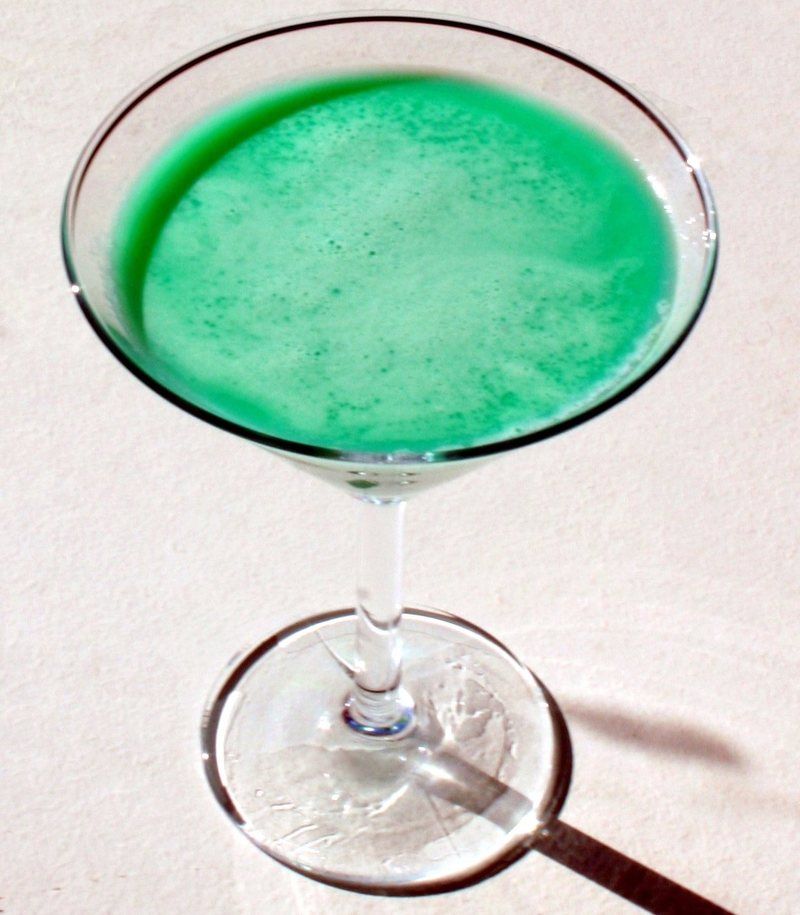
An easy mix for anyone who inherited some of grandma’s liquor. TEXASDEX/CC BY SA 3.0Grasshopper
New Orleans, LA
Despite its conspicuous hue, the history of this drink is mostly shrouded in mystery. It popped its tiny green head into existence for a cocktail competition in New York City in 1919, where it debuted as a simple, creamy, mashup of chocolate and mint. While it somehow lost the competition, the drink returned to New Orleans, the home of its inventor, and amassed a local following as it was served clandestinely throughout Prohibition. Ironically, the drink came to inspire the flavor of many sweets for kids, from pies and ice cream to cookies.
Part of what made the drink so Prohibition-friendly (or averse, depending on your approach to federal crime) was its simplicity: equal parts crème de cacao, crème de menthe, and heavy cream, shaken with ice and served in a martini glass. To sip like a true speakeasy patron, drink it out of a mug and don’t tell your roommates.
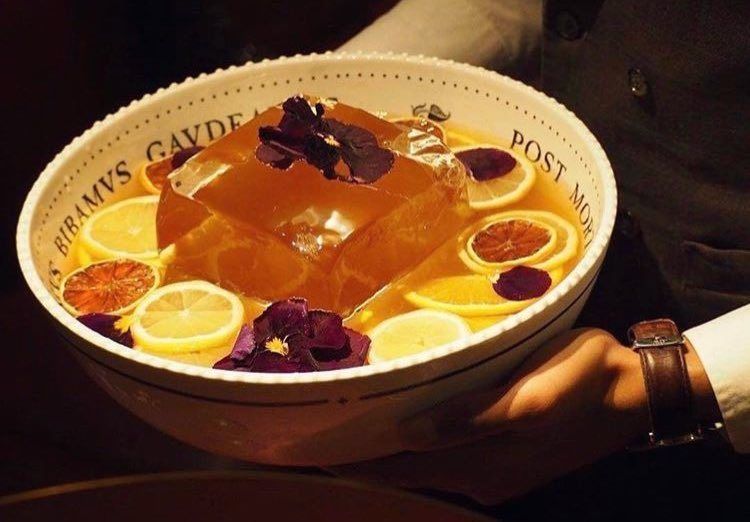
If it’s good enough for George Washington, it’s good enough for you. HINECOGNACS/USED WITH PERMISSIONFish House Punch
Philadelphia, PA
Before the Civil War, before the Constitution, before George Washington was fully potty-trained, a sovereign state was declared in modern-day Philadelphia. This state had “citizens,” all of them fishermen, and these proud anglers invented a drink so strong, it allegedly put more than a few historical figures under the table.
In 1732, the Schuylkill Fishing Company, otherwise known as the State in Schuylkill, signed a treaty with the indigenous Lenni-Lenape tribe, securing land and fishing rights along the banks of the Schuylkill River, inaugurating what is today the oldest social club in the English-speaking world. They still perform 18th-century fish-tossing rituals and offer a pre-meal toast to George Washington, an honorary member who was said—as a fully potty-trained adult—to be quite fond of the club’s Fish House Punch.
The punch is neither for the impatient, the intolerant, nor for the ill-provisioned liquor cabinet. If you’ve got a well-stocked bar, follow these instructions, adapted from Food & Wine’s recipe: Mix ¾ ounce each of dark rum, cognac, and peach brandy, as well as ½ ounce of simple syrup, ¼ ounce of lime juice, and ½ ounce of lemon juice in a shaker with ice and shake well. Pour the drink into a tumbler, garnish with a maraschino cherry and a wedge of lime, and toast to G.W.
Dawa
Nairobi, Kenya
It was on a trip to Brazil that a Kenyan restaurateur came up with the idea for Carnivore, Nairobi’s answer to the churrascarias of the Pampas region. Instead of beef, pork, and chicken, the restaurant grilled giraffe, wildebeest, and impala; in place of the caipirinha, the restaurant’s long-time bartender, Simon Kivenge, alias “Dr. Dawa,” claims to have invented the dawa, a bracing, sweet and sour, vodka-based cocktail.
While dawa means “health” in Swahili, there’s no curative properties to speak of, outside of claims from Kivenge that the drink helped ready adventurous stomachs for large portions of grilled game meat. What can be said of the drink is that after the Kenyan government banned the sale and consumption of endangered species, the popular cocktail helped keep the restaurant in business. Nowadays, Kivenge moves from table to table with a cigarette-girl party tray, making dawas fresh to order while patrons dine on less-endangered entrees like crocodile, ostrich, and rabbit.
While you may not have any rare meats to pair it with, it’s easy to make your own dawa at home. Muddle one quartered lime with a teaspoon of brown sugar in a tumbler before adding 2 ounces of vodka and a handful of ice. Dip the muddler in honey and muddle again until you’ve achieved a desired sweetness. You probably won’t receive a surprise delivery of grilled ungulate, but it doesn’t hurt to be ready.
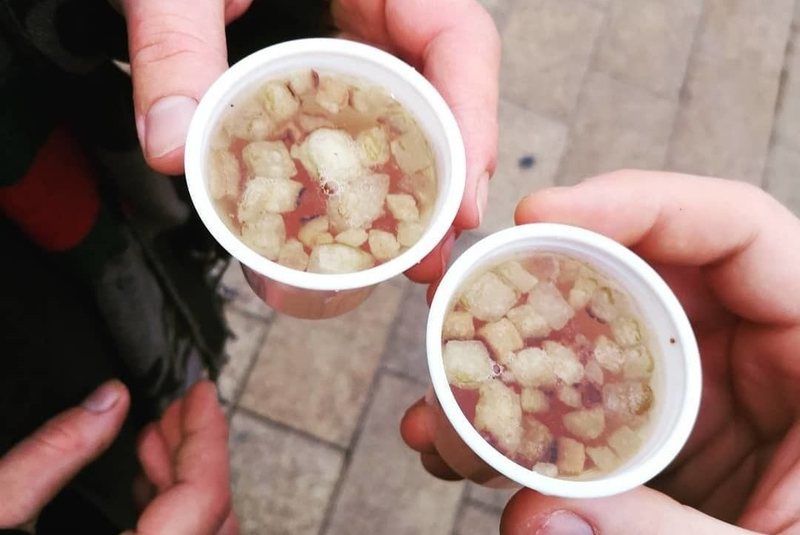
The hriatô is meant to be drunk, not seen. FILIP.REH/USED WITH PERMISSIONHriatô
Slovakia
It might not be Christmas, but it’s also not so hot that you can’t experiment with this bacon-based Slovakian wintertime cocktail. You have the time, no one’s watching, and what else are you doing with your plum brandy?
If anyone was going to incorporate pork into a cocktail, it was going to be the Slovaks: The majestic hog plays an outsize role in their national cuisine, and it’s one of the few flavors that can tame the ubiquitous slivovitz, a plum-based brandy often clocking in at over 50 percent alcohol. The potent porcinity pairs perfectly alongside a dollop of rich honey, with the potential to warm Slovakian Christmases and late-spring quarantines alike.
The trick is to drink hriatô quickly before the bacon fat solidifies, so be ready to imbibe before you start the following process, adapted from a recipe by Bake Your Slovak Roots: After dicing two strips of bacon, fry them in a pan over medium heat with extra bacon lard, if you have any. Once they’re crispy, add a tablespoon of honey. As soon as everything starts bubbling, remove the pan from heat and add a shot of whatever brandy you have (though plum is ideal). Return the pan to heat but don’t let it boil. Stir the contents of the pan a bit and pour into a heat-safe mug, including as much of the bacon fat as you feel you need in these uncertain times.
Gastro Obscura covers the world’s most wondrous food and drink.
11 Cocktails From Around the World That You Can Make at Home
You can’t travel, but you could probably use a drink.
BY LUKE FATERMAY 21, 2020
11 Cocktails From Around the World That You Can Make at Home

The dawa is Kenya's answer to the caipirinha. MJ_APOLLO/USED WITH PERMISSION
Wonder From Home
MAYBE YOU WERE SUPPOSED TO go to New Orleans this summer to see what Nicolas Cage’s pyramid tomb was all about. Perhaps it was Kenya to visit a mansion for giraffes. Or else it was Myanmar to see the island that inspired Neverland. We may not get to travel the world this summer as planned, but that doesn’t mean we can’t drink like it.
Dust off the cocktail shaker, push aside the regulars at the front of your liquor cabinet, and dive into a world of beverages beyond your go-to nightcaps. From Philadelphia social clubs to the meat stalls of Addis Ababa, the drinks on this list tell stories that can transport you. For the most part, they can be made with ingredients you already have or can pick up on your next grocery-store run, as well. There’s a frosty, accidental Oklahoma cocktail, a Mexican brew made from up-cycled pineapple peels, and a Slovakian Christmastime favorite that unironically includes bacon.
The flights are canceled and the bars are closed. Belly up to your counter, make a drink, and get yourself out there.

The Ramos Gin Fizz is best made while sleeveless. WSHENTON/CC BY-SA 3.0Ramos Gin Fizz
New Orleans, LA
If you want to make Henry Ramos, the Father of the Gin Fizz, happy, you’ll shake his prized, century-old variation for a full 12 minutes, until the gin, dairy, and citrus conspire to betray a sip that is as frothy as it is floral. Most experts today insist five minutes is sufficient.
RELATED
Make a Colonial American Cocktail With Ale, Rum, and Fire
The smoky, creamy Hot Ale Flip is a testament to crude ingenuity.
Read more

However long Ramos’s designated “Shaker Boys” spent on each drink, you wouldn’t have wanted a seat at the bar during 1915 Mardi Gras, when 35 of them shook feverishly from day to night at his nightclub, The Stag Cafe, and still failed to keep up with demand.
If you’ve got some gin in your cabinet and time on your hands, you too can party like it’s 1915. Toss 2 ounces of gin, ½ ounce of heavy cream, ½ ounce each of lemon juice and lime juice, ¾ ounce of simple syrup, ½ teaspoon of orange flower water, and an egg white into a shaker, and shake anywhere from 5 to 12 minutes. Add ice and shake again to get the now-silky concoction cold. Serve with a splash of club soda.

This creamy cocktail is one thing college students and the military can agree on. WINNIE LEE FOR GASTRO OBSCURAPanther Milk
Barcelona, Spain
You may think college students and the military go together about as well as gin and milk, but this century-old Spanish cocktail is here to show you they can coexist—and you don’t need to milk a panther to make one yourself.
Panther Milk, or Leche de Pantera, was created by an elite Spanish military unit in the 1920s as a cocktail that could be mobilized quickly and easily. Calling for a simple mix of gin, condensed milk, and water, the drink helped keep drab, far-flung dispatches a bit more colorful.
The drink fell into obscurity by the middle of the 1900s, but was revived in 1975 when a veteran of Spain’s military opened a Barcelona bar selling the long-lost Panther Milk. A competing bar caught wind of the fad and added a touch of grenadine for color, birthing the drink’s signature pink. It was overwhelming demand from nearby college students that eventually put the cocktail back on the map.
Whether you’re pro-military, pro-pink, or pro-actively looking for a new way to drink gin, you can make Panther Milk at home, with this recipe adapted from Steve the Bartender: Combine 1 ounce of gin, 1 ounce of white rum, 1 ounce of condensed milk, 5 ounces of milk, and a teaspoon of grenadine for that splash of pink color. Shake well with ice, strain into a glass, and sprinkle with cinnamon.

The Pegu Club cocktail may make a gin-drinker of you yet. COURTESY OF THE STRAND HOTEL YANGONPegu Club Cocktail
Yangon, Myanmar
Perhaps the only enduring positive outcome of 124 years of British rule in Myanmar (previously known as Burma) was this cocktail. The bitter, citrusy gin drink sent refreshing chills down the sweaty napes of many military officers sweltering in the Pegu Club, an expansive, Victorian-style gentleman’s club on the outskirts of Yangon that could have been called a sore thumb if it were remotely as useful.
As the British empire receded, the drink became popular throughout the world, or at least the world’s cocktail bars. The sun now sets on England; this cocktail, less so. Mix 2 ounces of gin, ¾ ounce of orange liqueur, ½ ounce of lime juice, and 2 dashes of Angostura bitters in a shaker with ice and shake well. Strain into a chilled cocktail glass and serve with a lime peel.

Halve your pineapple and drink it, too. TAPSANDTACOS/USED WITH PERMISSIONTepache
Mexico
When it comes to the origins of the fermented, mildly alcoholic pineapple beverage known as tepache, culinary historians are split. Some believe Aztecs were experimenting with the process long before Spanish conquest; others believe it came from conquistadors’ attempts to make New World cider with pineapples. Whoever started it, the fruity, effervescent drink is now a staple of the Mexican street-food scene.
There’s more than one way to carry out the centuries-old process, and more than one way to cause an explosion if you do it improperly as well. Start by dissolving a cup of brown sugar in two quarts of warm water. Add the peels and core from a ripe pineapple along with a stick of cinnamon and three cloves to a pitcher. Pour the sugar water into the pitcher, cover it with a cloth, and set it aside for 24 hours, or until a layer of foam has collected along the surface of the water (do not leave the mixture to ferment in a closed container or bottle—it could explode). Strain the mixture and add sugar to taste. Drink with ice.

The Lunchbox is Oklahoma’s happiest accident. TAI_CRAFTBEER_GIRL/USED WITH PERMISSIONThe Lunchbox
Oklahoma City, OK
The first rendition of this frosty, citrusy, almondy “beer-tail” was an accident. The millions made afterward were not.
Edna Scott, the namesake proprietor of Edna’s Bar in Oklahoma City, Oklahoma, was trying to make a separate drink altogether when she stumbled across this summertime elixir in the late 1990s; the state of Oklahoma couldn’t be happier that she failed. “The Lunchbox” is now made throughout the South and has even spawned regional varieties.
To make the original cocktail, place a shot-glass full of amaretto inside a frosted beer mug, fill the mug three-quarters of the way with Coors Light (or any light beer you have on hand), and top it off with orange juice. As Edna’s daughter has said, the drink has “a little bit of everything you need,” assuming food and shelter are already in place.

There’s no wrong way to drink Turbo. SAM O’BRIEN FOR GASTRO OBSCURATurbo
Addis Ababa, Ethiopia
If you ask 10 people in Addis Ababa how to make Turbo, you’ll get 10 different answers, and technically they’ll all be correct. That’s because rather than a recipe-based cocktail, the drink is more of a loose tradition, born among the casual, plastic-table eateries abutting the capital city’s many butcher-houses. If you’re drinking a light, sweet, boozy beverage with smoky grilled meat, you’ve got the right idea.
While there are countless variations, most involve a mixture of beer, wine, and soda. It may not be groundbreaking, but it does speak to a distinctly Ethiopian approach to gastronomy known as spris, Amharic for “mix.” Ask for a spris in a cafe, you’ll get half coffee, half tea. Ask for it in a juice bar, you’ll get a blend of the day’s fresh fruit. As for the butcher-house special, equal parts amber beer, white wine, and Sprite should do the trick.

A little summertime Christmas spirit never hurt anyone. SANDRO_ITALIAN_TRAVELER/USED WITH PERMISSIONCanelazo
Andean Highlands
If anise-kissed cocktails are your thing, canelazo will be right up your alley. If it’s not your thing, there are enough other spicy, sweet flavors going on in this South American cocktail to keep you distracted. For those who’ve spent winters in the Andean highlands, however, none of this should be news.
Canelazo, from the Spanish canela, or “cinnamon,” is a popular holiday beverage along the west coast of South America where cinnamon trees are cultivated, though it’s most popular in the Ecuadorian capital of Quito (the highest capital city in the world). With such a broad range of influence, recipes vary, but the drink generally marries warm spices, citrus, and unrefined sugar in a pot of hot water alongside the cane-based, licorice-adjacent aguardiente for a cozy sip on long, breathless Andean nights.
Whether or not you have access to aguardiente, you can bring the flavor of navidad home by following these steps, adapted from a recipe by The Spruce Eats: Add 1⅓ cups of brown sugar, a juiced lime, 1 teaspoon of whole cloves, 5 cinnamon sticks, and a pinch of salt to 3 cups of boiling water, then simmer for about 7 minutes. Remove the pot from heat and add ½ cup of orange juice and 4 ounces of aguardiente or rum. Strain and serve while it’s still hot.

An easy mix for anyone who inherited some of grandma’s liquor. TEXASDEX/CC BY SA 3.0Grasshopper
New Orleans, LA
Despite its conspicuous hue, the history of this drink is mostly shrouded in mystery. It popped its tiny green head into existence for a cocktail competition in New York City in 1919, where it debuted as a simple, creamy, mashup of chocolate and mint. While it somehow lost the competition, the drink returned to New Orleans, the home of its inventor, and amassed a local following as it was served clandestinely throughout Prohibition. Ironically, the drink came to inspire the flavor of many sweets for kids, from pies and ice cream to cookies.
Part of what made the drink so Prohibition-friendly (or averse, depending on your approach to federal crime) was its simplicity: equal parts crème de cacao, crème de menthe, and heavy cream, shaken with ice and served in a martini glass. To sip like a true speakeasy patron, drink it out of a mug and don’t tell your roommates.

If it’s good enough for George Washington, it’s good enough for you. HINECOGNACS/USED WITH PERMISSIONFish House Punch
Philadelphia, PA
Before the Civil War, before the Constitution, before George Washington was fully potty-trained, a sovereign state was declared in modern-day Philadelphia. This state had “citizens,” all of them fishermen, and these proud anglers invented a drink so strong, it allegedly put more than a few historical figures under the table.
In 1732, the Schuylkill Fishing Company, otherwise known as the State in Schuylkill, signed a treaty with the indigenous Lenni-Lenape tribe, securing land and fishing rights along the banks of the Schuylkill River, inaugurating what is today the oldest social club in the English-speaking world. They still perform 18th-century fish-tossing rituals and offer a pre-meal toast to George Washington, an honorary member who was said—as a fully potty-trained adult—to be quite fond of the club’s Fish House Punch.
The punch is neither for the impatient, the intolerant, nor for the ill-provisioned liquor cabinet. If you’ve got a well-stocked bar, follow these instructions, adapted from Food & Wine’s recipe: Mix ¾ ounce each of dark rum, cognac, and peach brandy, as well as ½ ounce of simple syrup, ¼ ounce of lime juice, and ½ ounce of lemon juice in a shaker with ice and shake well. Pour the drink into a tumbler, garnish with a maraschino cherry and a wedge of lime, and toast to G.W.
Dawa
Nairobi, Kenya
It was on a trip to Brazil that a Kenyan restaurateur came up with the idea for Carnivore, Nairobi’s answer to the churrascarias of the Pampas region. Instead of beef, pork, and chicken, the restaurant grilled giraffe, wildebeest, and impala; in place of the caipirinha, the restaurant’s long-time bartender, Simon Kivenge, alias “Dr. Dawa,” claims to have invented the dawa, a bracing, sweet and sour, vodka-based cocktail.
While dawa means “health” in Swahili, there’s no curative properties to speak of, outside of claims from Kivenge that the drink helped ready adventurous stomachs for large portions of grilled game meat. What can be said of the drink is that after the Kenyan government banned the sale and consumption of endangered species, the popular cocktail helped keep the restaurant in business. Nowadays, Kivenge moves from table to table with a cigarette-girl party tray, making dawas fresh to order while patrons dine on less-endangered entrees like crocodile, ostrich, and rabbit.
While you may not have any rare meats to pair it with, it’s easy to make your own dawa at home. Muddle one quartered lime with a teaspoon of brown sugar in a tumbler before adding 2 ounces of vodka and a handful of ice. Dip the muddler in honey and muddle again until you’ve achieved a desired sweetness. You probably won’t receive a surprise delivery of grilled ungulate, but it doesn’t hurt to be ready.

The hriatô is meant to be drunk, not seen. FILIP.REH/USED WITH PERMISSIONHriatô
Slovakia
It might not be Christmas, but it’s also not so hot that you can’t experiment with this bacon-based Slovakian wintertime cocktail. You have the time, no one’s watching, and what else are you doing with your plum brandy?
If anyone was going to incorporate pork into a cocktail, it was going to be the Slovaks: The majestic hog plays an outsize role in their national cuisine, and it’s one of the few flavors that can tame the ubiquitous slivovitz, a plum-based brandy often clocking in at over 50 percent alcohol. The potent porcinity pairs perfectly alongside a dollop of rich honey, with the potential to warm Slovakian Christmases and late-spring quarantines alike.
The trick is to drink hriatô quickly before the bacon fat solidifies, so be ready to imbibe before you start the following process, adapted from a recipe by Bake Your Slovak Roots: After dicing two strips of bacon, fry them in a pan over medium heat with extra bacon lard, if you have any. Once they’re crispy, add a tablespoon of honey. As soon as everything starts bubbling, remove the pan from heat and add a shot of whatever brandy you have (though plum is ideal). Return the pan to heat but don’t let it boil. Stir the contents of the pan a bit and pour into a heat-safe mug, including as much of the bacon fat as you feel you need in these uncertain times.
Gastro Obscura covers the world’s most wondrous food and drink.
bulllee
Well-Known Member
Shout out to @momofthegoons , this sounded good to me. You like Mezcal ? I use to love that stuff.
https://punchdrink.com/recipes/mezcal-mule/
Mezcal Mule
Adapted from The PDT Cocktail Book by Jim Meehan
photo: NICK BROWN
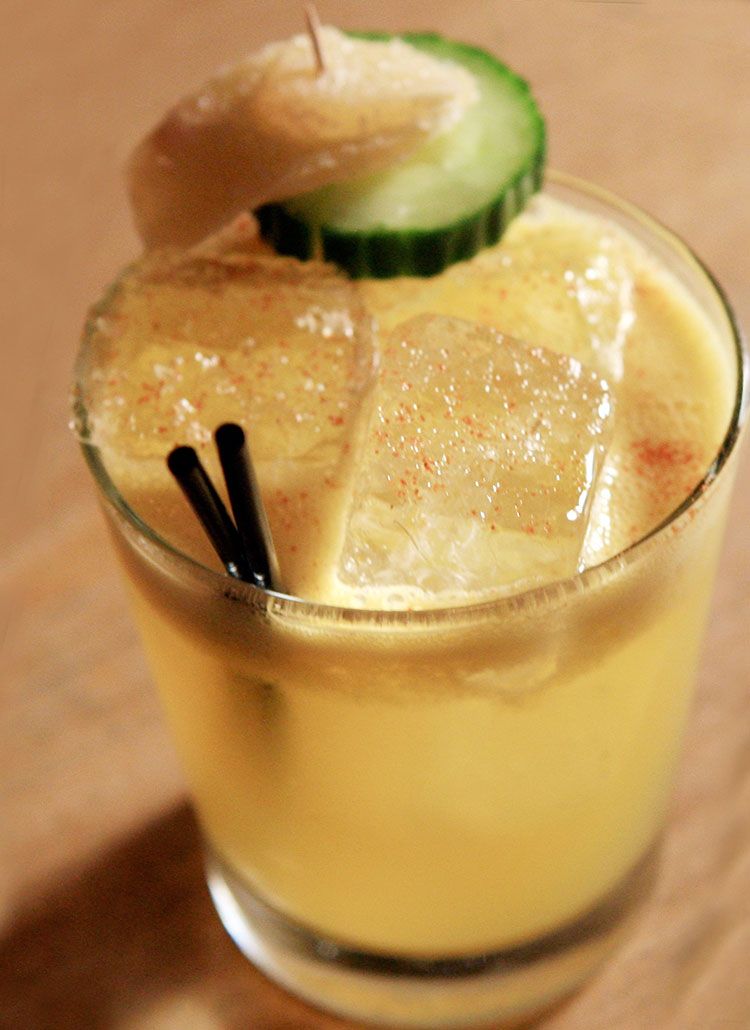
In this take on a mule—a lime and ginger based libation—Jim Meehan, of New York’s PDT, was set on developing a cocktail for Richard Betts of Sombra Mezcal. “When I went about conceiving this drink, I wanted to use a lot of traditional Oaxacan flavors,” says Meehan. “Passion fruit and agave are widely available there, and the vegetal notes of the cucumber, plus the spice of the ginger are both akin to mezcal.” PDT uses a house-made ginger beer to create the spicy lime-laced backdrop for the smoky mezcal and bright fruit notes.
Reprinted with permission from The PDT Cocktail Book © 2011 by Jim Meehan, Sterling Epicure an imprint of Sterling Publishing Co., Inc.
INGREDIENTS
Serving: 1
DIRECTIONS
https://punchdrink.com/recipes/mezcal-mule/
Mezcal Mule
Adapted from The PDT Cocktail Book by Jim Meehan
photo: NICK BROWN

In this take on a mule—a lime and ginger based libation—Jim Meehan, of New York’s PDT, was set on developing a cocktail for Richard Betts of Sombra Mezcal. “When I went about conceiving this drink, I wanted to use a lot of traditional Oaxacan flavors,” says Meehan. “Passion fruit and agave are widely available there, and the vegetal notes of the cucumber, plus the spice of the ginger are both akin to mezcal.” PDT uses a house-made ginger beer to create the spicy lime-laced backdrop for the smoky mezcal and bright fruit notes.
Reprinted with permission from The PDT Cocktail Book © 2011 by Jim Meehan, Sterling Epicure an imprint of Sterling Publishing Co., Inc.
INGREDIENTS
Serving: 1
- 1 1/2 ounces mezcal (preferably Sombra)
- 1 ounce ginger beer, PDT's house recipe
- 3/4 ounce lime juice
- 3/4 ounce passion fruit purée (preferably Boiron)
- 1/2 ounce agave nectar
- 3 slices cucumber
DIRECTIONS
- Add cucumber slices and agave syrup to a mixing glass and muddle.
- Add all other ingredients, add ice and shake until chilled.
- Strain over ice into a chilled rocks glass.
- Garnish with a slice of cucumber, a piece of candied ginger and dust gently with chili powder.
bulllee
Well-Known Member
https://punchdrink.com/articles/det...wn&utm_medium=Email&cid=118695&mid=1928664911
Detroit’s Last Great Blues Bar
In a changing city, the 75-year-old Raven Lounge & Restaurant remains a spiritual home for America’s original music.
JULY 3, 2019
story: LESLIE PARISEAU
photos: JENNA BELEVENDER
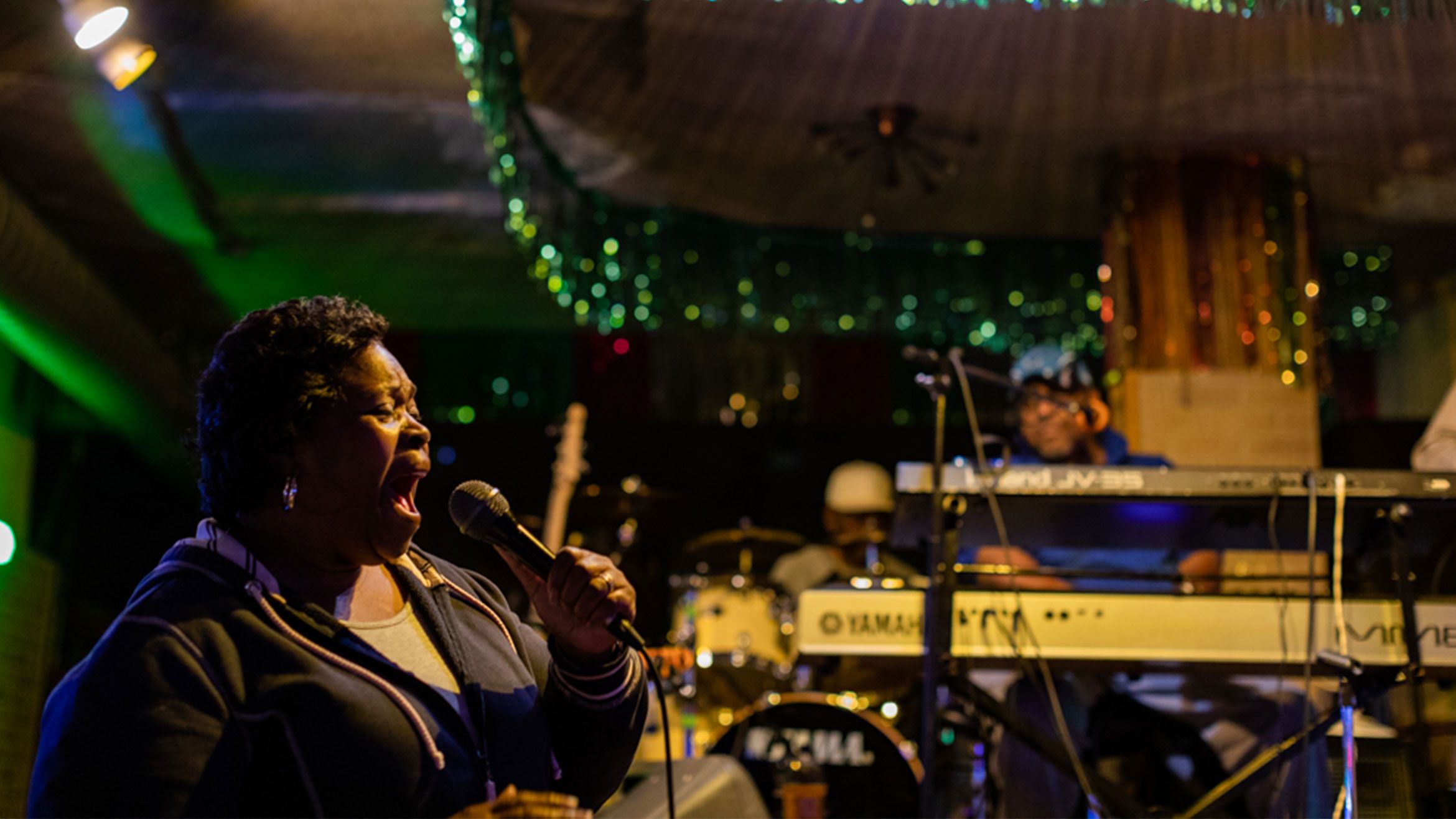
Under a starry Midwestern sky, Poletown is quiet, save for a wheezy melody spinning out from an open doorway into the late spring air. On an otherwise dark street, a blue-and-red neon sign beckons. Through the door, inside a century-old, two-story brick building, past a vending machine filled with Cheetos, Kools and Newports, past an audience of 20 or so bobbing heads, up beneath a stage framed with garlands of foil tinsel, a man in denim overalls and a straw hat seesaws over a harmonica. Around his waist is a tool belt filled with four, five—no—six harmonicas. A band of half a dozen men amble along a blues riff as the harmonica player bends and warbles and huffs, occasionally hollering into the microphone about a cheating woman. The audience whoops, and the song unspools to its melancholy end.
It’s Thursday night at The Raven Lounge & Restaurant on the east side of Detroit, which means everybody’s here to listen to the Delta Blues. Ben Moore and the Blues Express are in the house, ready to back whomever is brave enough to pick up the mic. There’s a family from Canada (including two more men in overalls), a few people from Alabama, a couple from New York and a dozen or so homegrown Detroiters. When the man with the myriad harmonicas—“Harmonica Shah,” he’s called—wraps, he packs everything up into a red metal toolbox and heads out. Kathy-with-a-K from Savannah, Georgia, comes around to take the drink order. “What can I get you, honey?” She deals a few coasters across the red plastic tablecloths and floats back to the bar.
During the last wave of the Great Migration in the 1950s, Sam Watts and Myrtle Freeman moved up to Detroit from Texas and South Carolina, respectively, meeting at her 21st birthday party and marrying shortly after. In 1966, they opened The Raven Lounge & Restaurant in Poletown, in a building that had originally housed a Polish establishment from the 1930s called Mazer’s Bar. Back then, the neighborhood was a mix of Polish, Italian and African American, its corners bustling with businesses, including half a dozen music clubs. The Wattses wanted to build a place where decent people of all colors and creeds could come to feed their souls with food and music. The menu is still filled with catfish, black-eyed peas and fried chicken, the performances still dedicated to blues. “Sam was one of the nicest Americans you’d ever want to meet,” says Tommy Stephens, The Raven’s current owner. “He took joy in seeing you enjoy yourself.”
Kathy-with-a-K swings by with a round of Buds and a Gin and Tonic. A gentleman in a suit has taken up the microphone, ushering in a crackling energy that erupts when he takes on the Z. Z. Hill song “Someone Else Is Steppin’ In” (also about a cheating woman). Between songs, he solicits the audience for personal details. There are two birthdays in the house, the most vocal claimant of which dons a blonde mullet and a colorful muumuu; her lanky companion is splayed across his chair, a glowing Bluetooth device tucked into his ear. Above them, a television screen silently, incongruously plays an episode of Modern Family. The singer slides expertly from monologue right into Johnnie Taylor’s “Last Two Dollars,” and the crowd shoulder-shimmies along.
INSIDE THE RAVEN LOUNGE & RESTAURANT
Previous
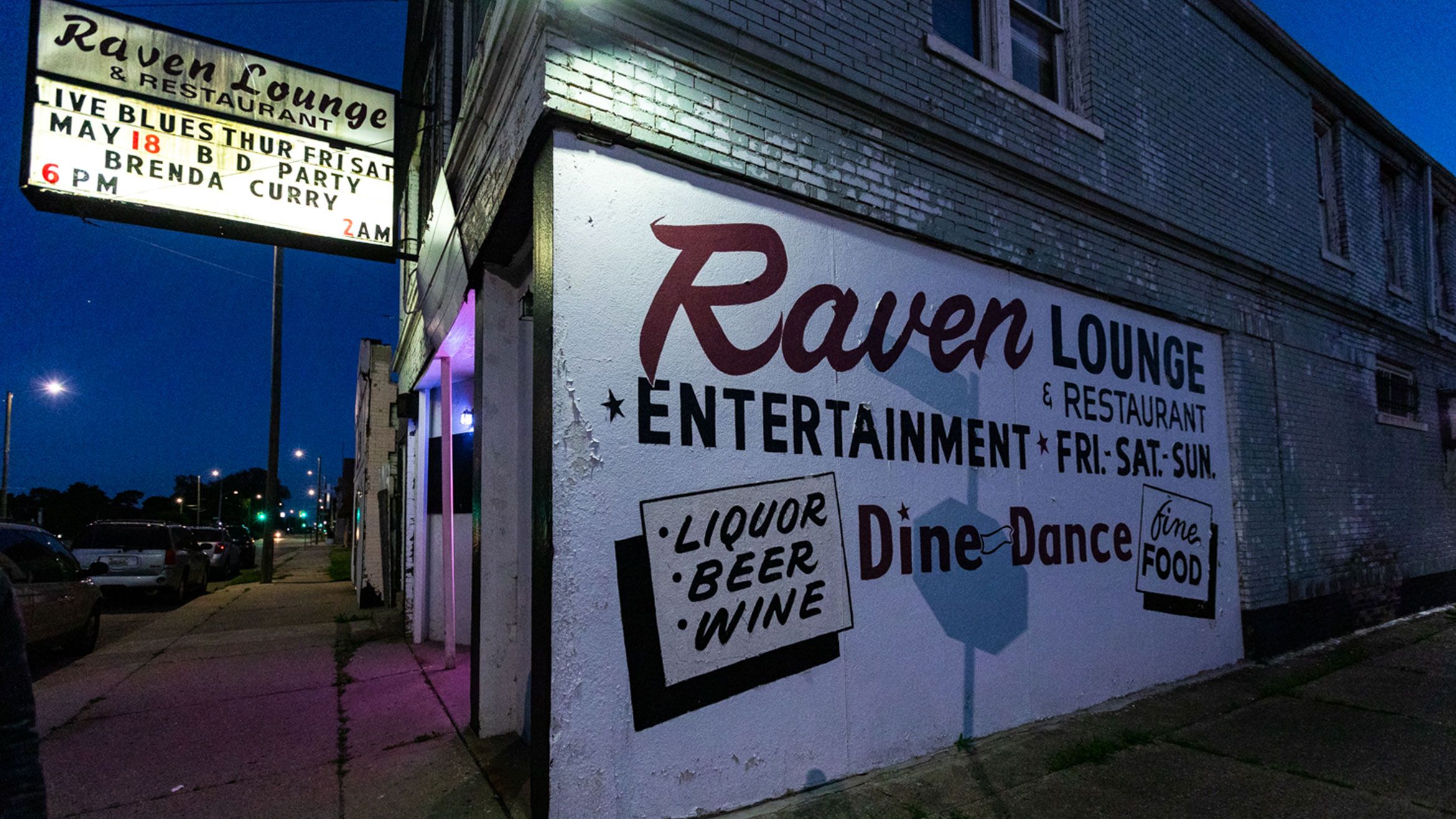
Many of the neighborhood’s blocks have gone back to prairie, with a handful of abandoned stores and still-vibrant churches rooted like wildflowers amid the long grasses. The Raven plays on.
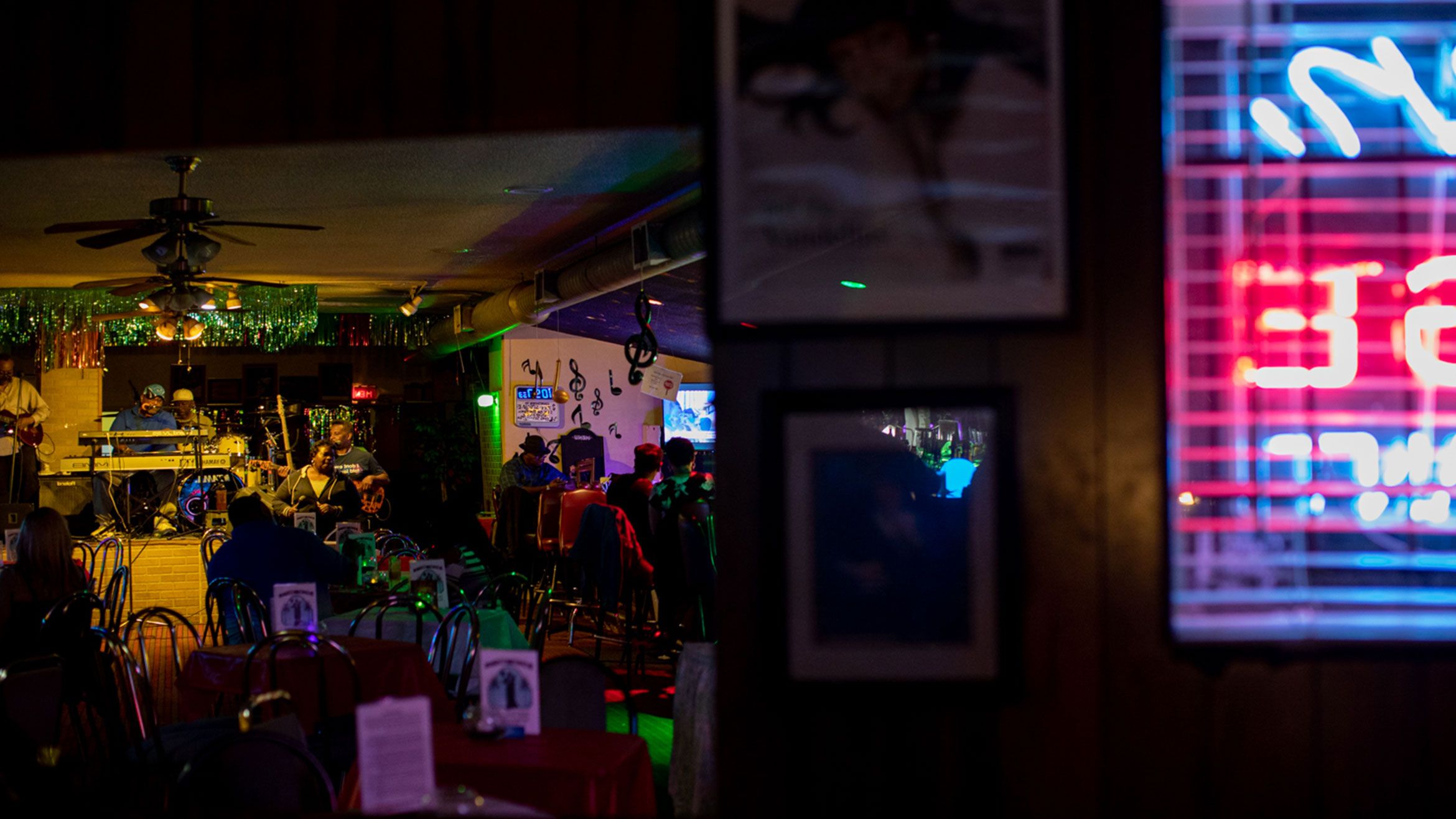
On the east side of Detroit, the Raven Lounge & Restaurant was opened in 1966 by Sam and Myrtle Watts as a place for decent folks of all colors and creeds.
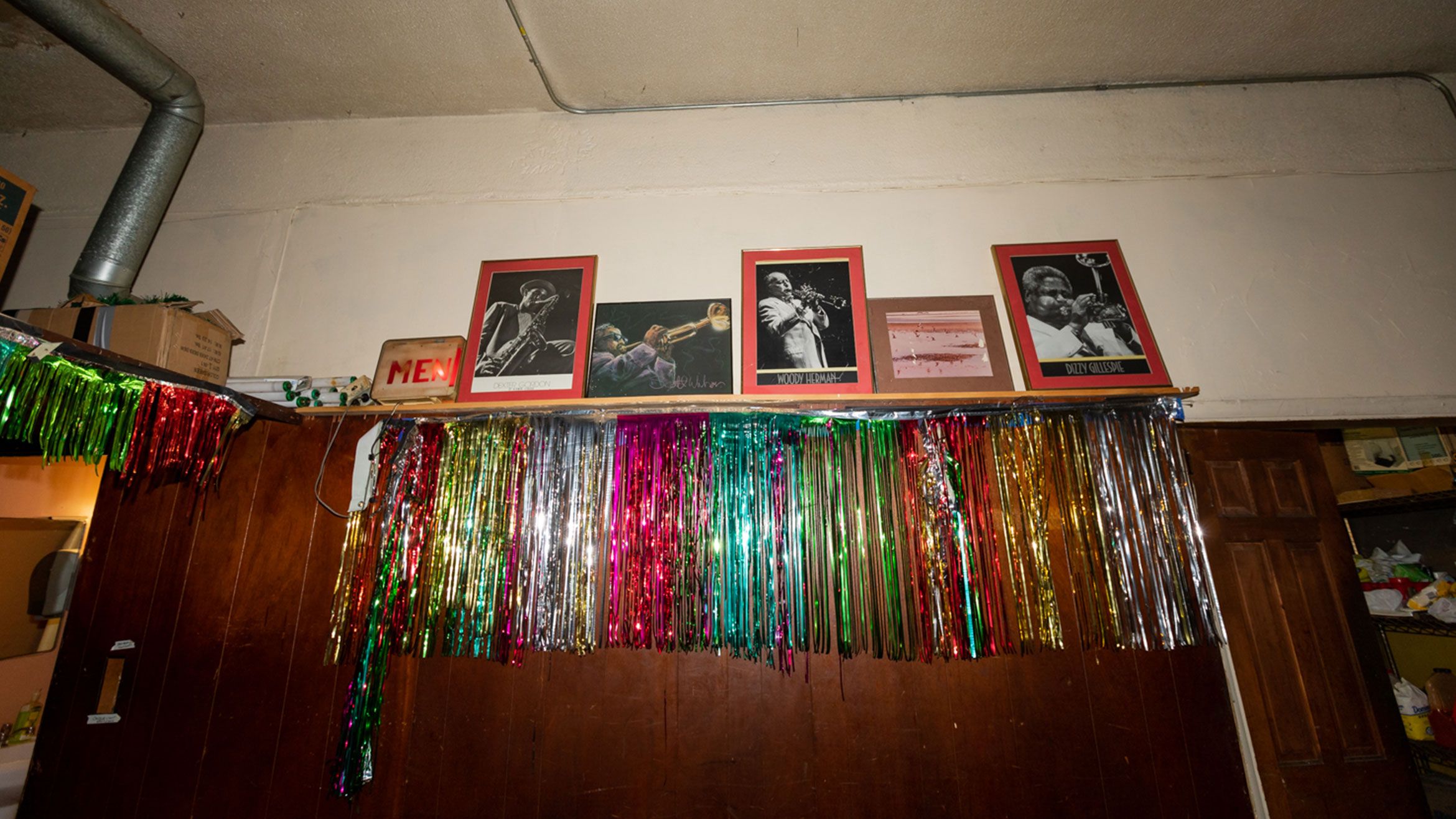
Over the years, many famous blues musicians have stopped through to listen and play on the Raven’s modest stage.
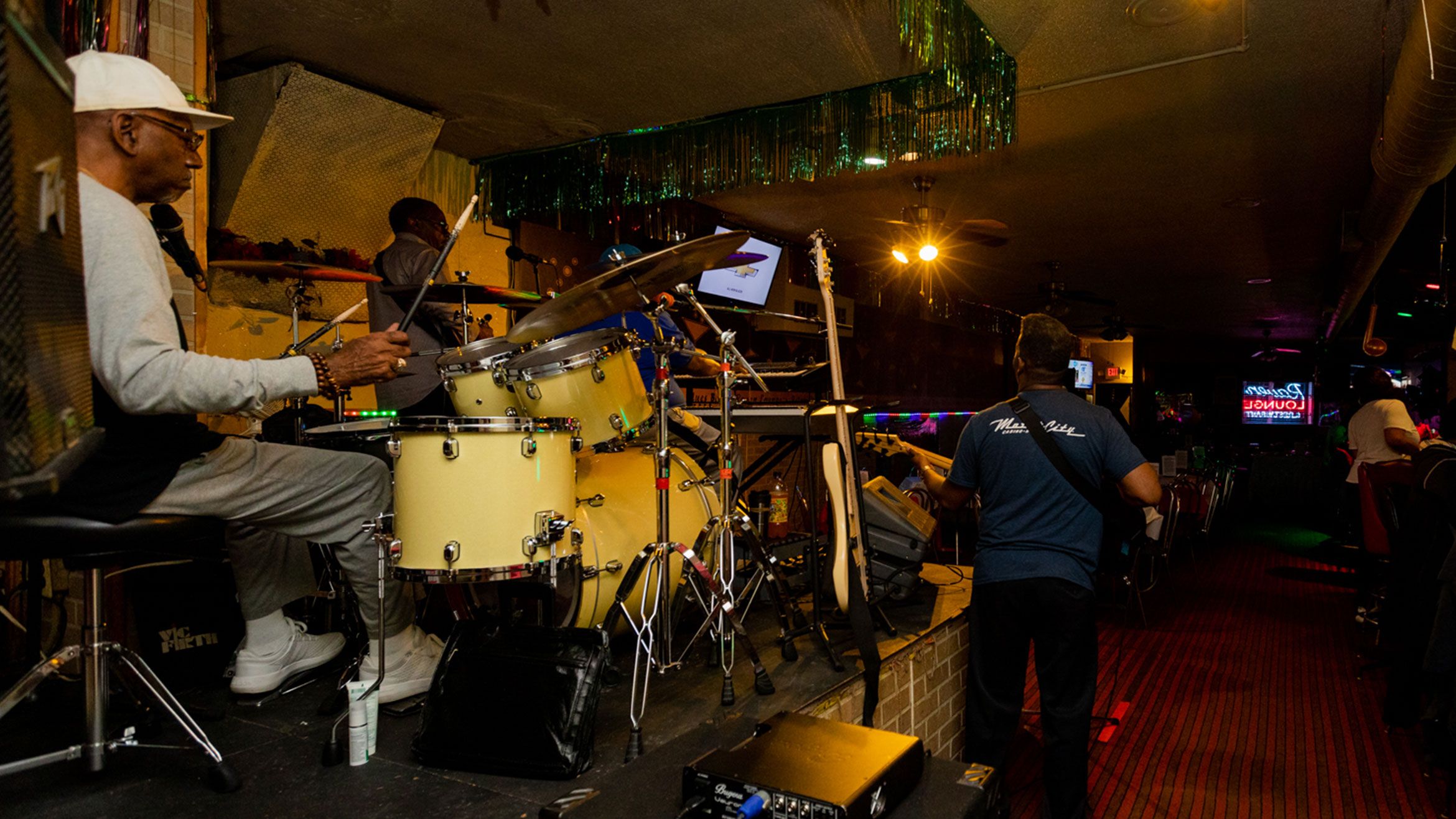
Thursdays nights are dedicated to the Delta Blues and the Raven’s microphone is open to anyone brave enough to pick it up.
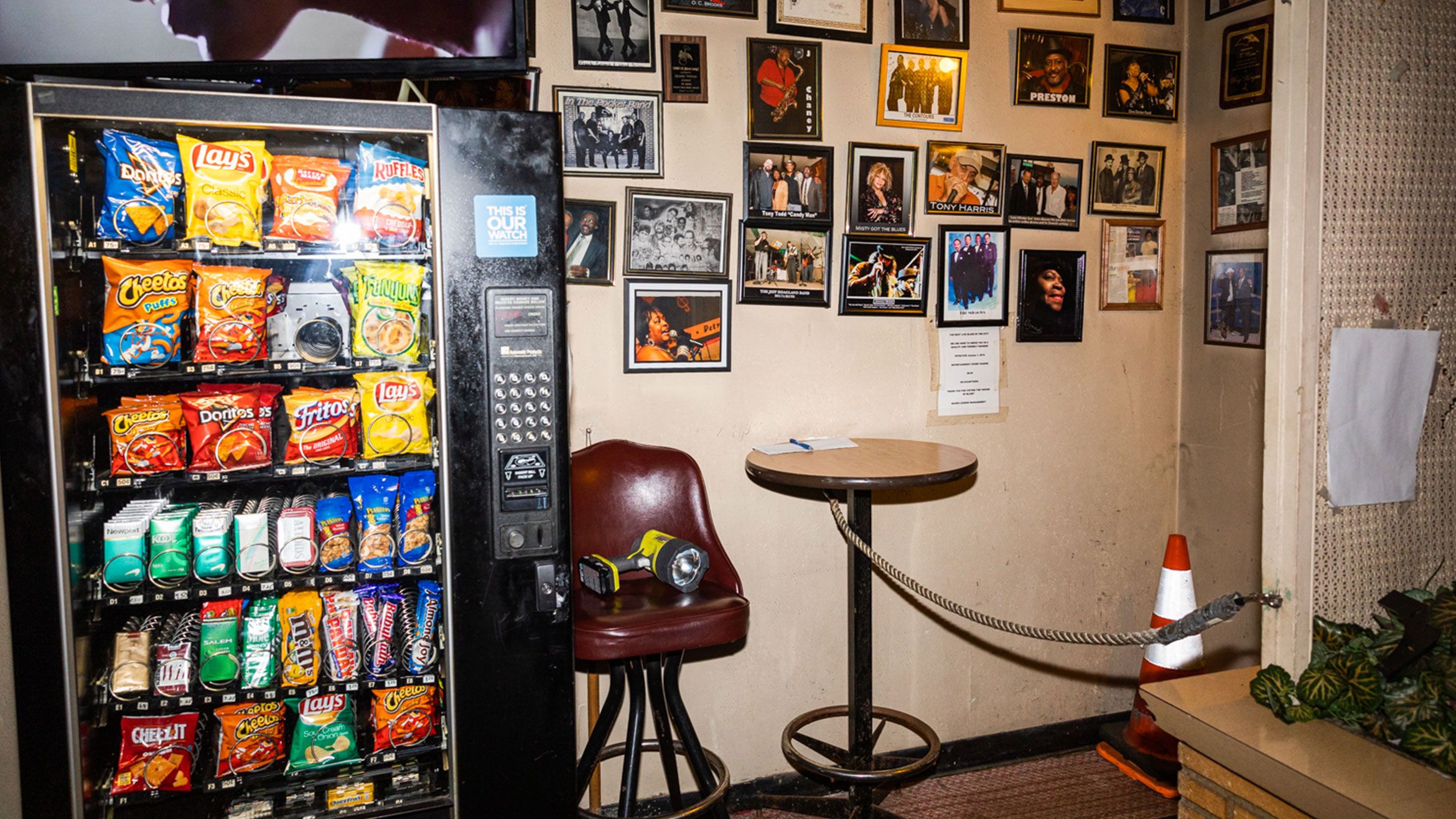
On Fridays and Saturdays, more formal blues bands play. The Raven remains the city and the state’s oldest and longest-running blues bar.
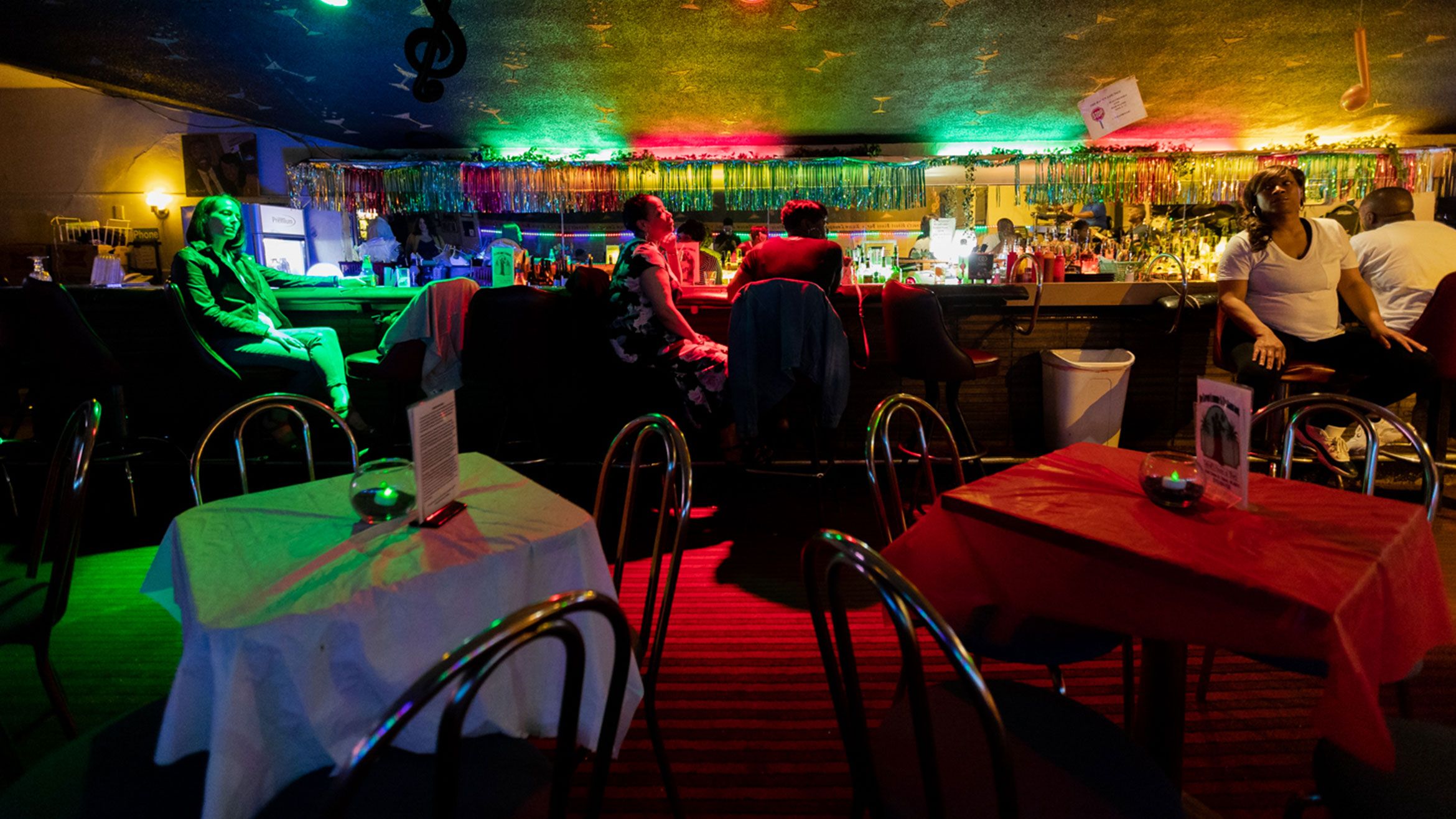
Since its opening, the bar has been a gathering place for cops, teachers and autoworkers. Its current owner, Tommy Stephens, was a Detroit city school educator who started coming around in 1968.
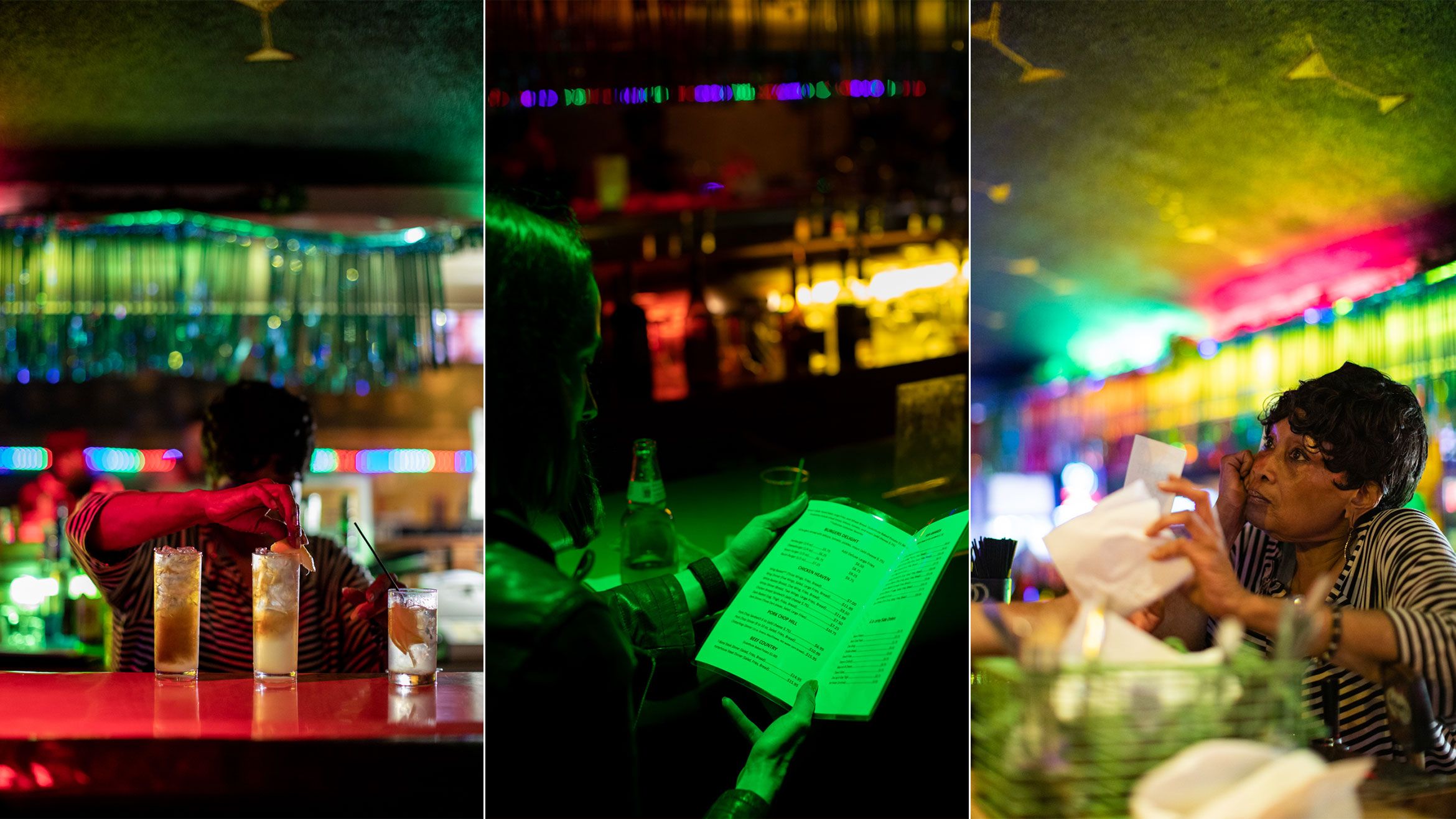
“We’ve had the same feeling in this place for over 75 years,” says Stephens. “So many good souls have come into The Raven and passed away, and their souls come back to The Raven.”
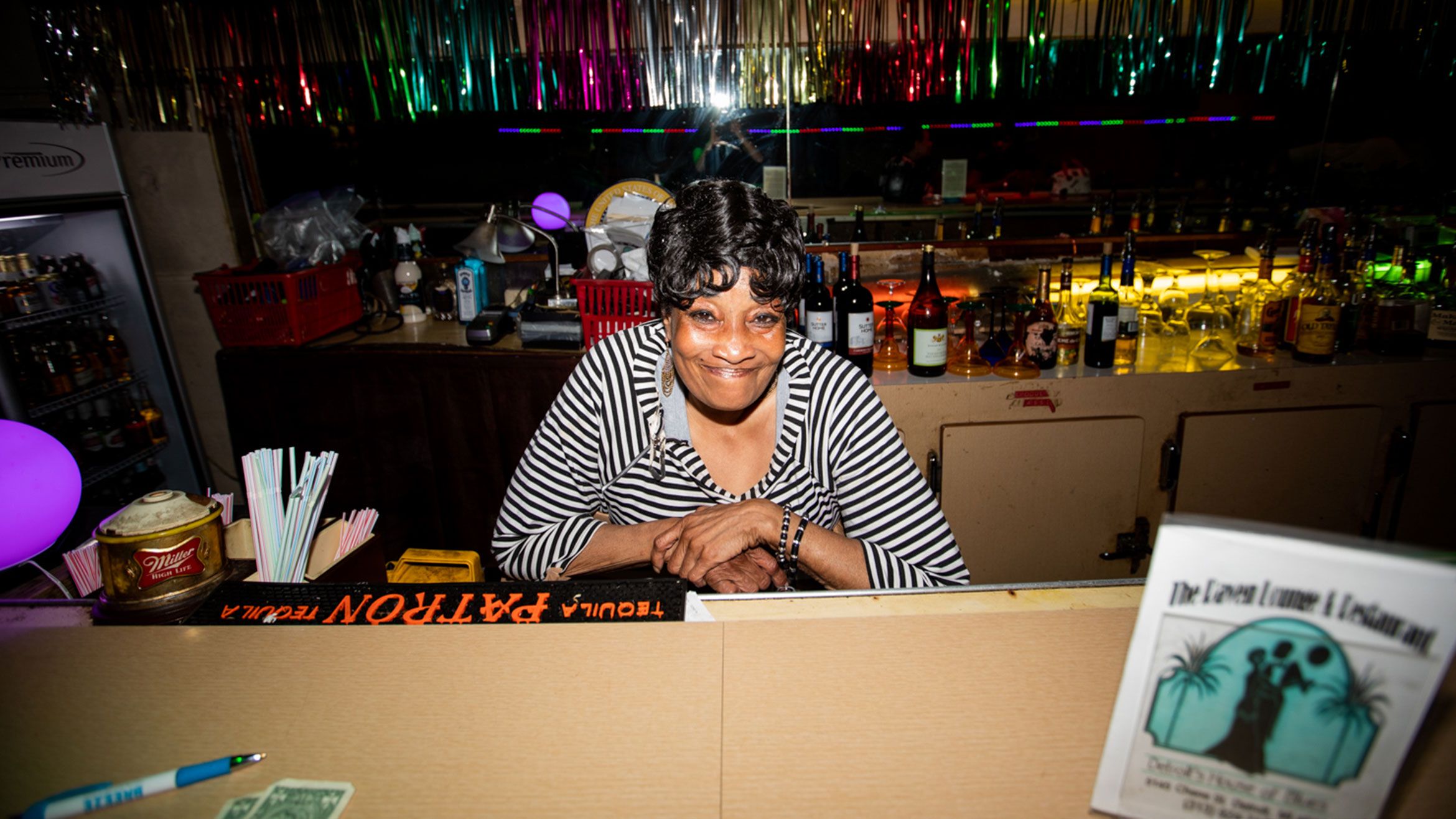
Kathy from Savannah, Georgia, works the bar on Delta Blues night.
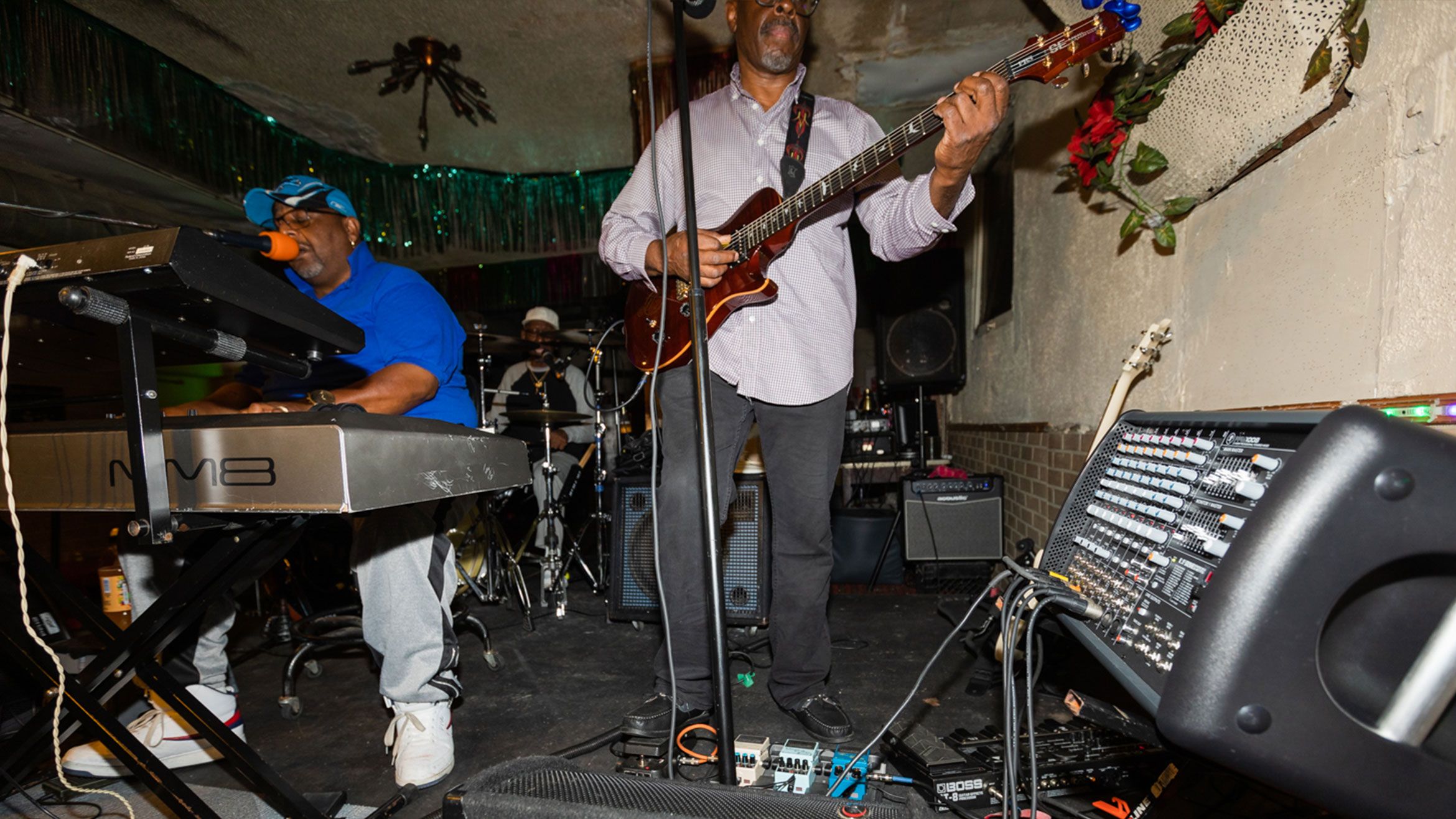
Current owner Tommy Stephens has seen people from China to Philadelphia stop in, seeking evidence of the world he’s worked so hard to keep alive.

Many of the neighborhood’s blocks have gone back to prairie, with a handful of abandoned stores and still-vibrant churches rooted like wildflowers amid the long grasses. The Raven plays on.

On the east side of Detroit, the Raven Lounge & Restaurant was opened in 1966 by Sam and Myrtle Watts as a place for decent folks of all colors and creeds.
Next
1 / 9
“Can you just imagine?” says Stephens. “All those empty lots were businesses. There were hardware stores, bakeries—you used to be able to buy the best cheesecake just down the street from the Polish ladies.” Today, Poletown is indicative of what occurred across Detroit post-riot in 1967. Many of the neighborhood’s blocks have gone back to prairie, with a handful of abandoned stores and still-vibrant churches rooted like wildflowers amid the long grasses.
According to a 1992 Detroit Free Press article recounting citizens’ memories of the riots, the Wattses’ employees put up a sign that said “soul sister, soul brother,” indicating the bar was black-owned. The riot didn’t touch Poletown, but soon after, businesses were boarded up, and “the neighborhood just went to hell after that,” Myrtle Watts was quoted as saying. Even so—perhaps because it refused to pull up stakes—The Raven continued to be a draw.
Tommy Stephens began coming to The Raven in 1968. A Detroit city school educator from Greenville, Florida (the home of Ray Charles), he would meet up there with teachers and coaches to discuss school issues and swap stories. Over the years, he offered business advice to Watts, and when Watts died in 1983 his will named Stephens as someone Myrtle might consider approaching to take over The Raven. In 1994, when Myrtle was ready to retire, Stephens bought the club. “We didn’t change too much. This was one of the things Myrtle mentioned. We were to keep it old-school,” says Stephens, now 72. “Sam didn’t want any riffraff. We still operate that way to this day. Sam always said, ‘All money is not good money.’”
Over the last several years, Detroit has experienced a wave of growth, redevelopment and tourism, though the east side has yet to fully benefit from the city’s investment. Even so, tourists have begun trickling out toward The Raven, and Stephens has seen people from China to Philadelphia stop in, seeking evidence of the world he’s worked so hard to keep alive. “We’ve had the same feeling in this place for over 75 years,” says Stephens. “So many good souls have come into The Raven and passed away, and their souls come back to The Raven.”
It’s getting close to midnight, and the band is still chugging. The man in the suit polls the audience: “How many of you out there been in and out of love before? Raise your hand.” A chorus of “uh-huhs” and “don’t you know its” ripples forward. Following a classic blues preamble about the singer’s tension with his old woman, the band launches into a passionate 10-minute rendition of “Let’s Straighten It Out” by Latimore. Everybody is feeling it, and another round of drinks slides down like nothing.
Just before the band breaks, the drum punches out a familiar rhythm, and the crowd snaps to. Within the first few bars of James Brown’s “Get Up,” the crowd gets on up. The Delta Blues may have been replaced by funk, but The Raven Lounge is still right here.
Tip: Though the mural on the side of the building says otherwise, The Raven is open Thursday through Saturday. Delta Blues Thursdays are free, while Fridays and Saturdays host more formal blues bands and require an $8 cover. The Raven Lounge & Restaurant | 5145 Chene St., Detroit, MI
Detroit’s Last Great Blues Bar
In a changing city, the 75-year-old Raven Lounge & Restaurant remains a spiritual home for America’s original music.
JULY 3, 2019
story: LESLIE PARISEAU
photos: JENNA BELEVENDER

Under a starry Midwestern sky, Poletown is quiet, save for a wheezy melody spinning out from an open doorway into the late spring air. On an otherwise dark street, a blue-and-red neon sign beckons. Through the door, inside a century-old, two-story brick building, past a vending machine filled with Cheetos, Kools and Newports, past an audience of 20 or so bobbing heads, up beneath a stage framed with garlands of foil tinsel, a man in denim overalls and a straw hat seesaws over a harmonica. Around his waist is a tool belt filled with four, five—no—six harmonicas. A band of half a dozen men amble along a blues riff as the harmonica player bends and warbles and huffs, occasionally hollering into the microphone about a cheating woman. The audience whoops, and the song unspools to its melancholy end.
It’s Thursday night at The Raven Lounge & Restaurant on the east side of Detroit, which means everybody’s here to listen to the Delta Blues. Ben Moore and the Blues Express are in the house, ready to back whomever is brave enough to pick up the mic. There’s a family from Canada (including two more men in overalls), a few people from Alabama, a couple from New York and a dozen or so homegrown Detroiters. When the man with the myriad harmonicas—“Harmonica Shah,” he’s called—wraps, he packs everything up into a red metal toolbox and heads out. Kathy-with-a-K from Savannah, Georgia, comes around to take the drink order. “What can I get you, honey?” She deals a few coasters across the red plastic tablecloths and floats back to the bar.
During the last wave of the Great Migration in the 1950s, Sam Watts and Myrtle Freeman moved up to Detroit from Texas and South Carolina, respectively, meeting at her 21st birthday party and marrying shortly after. In 1966, they opened The Raven Lounge & Restaurant in Poletown, in a building that had originally housed a Polish establishment from the 1930s called Mazer’s Bar. Back then, the neighborhood was a mix of Polish, Italian and African American, its corners bustling with businesses, including half a dozen music clubs. The Wattses wanted to build a place where decent people of all colors and creeds could come to feed their souls with food and music. The menu is still filled with catfish, black-eyed peas and fried chicken, the performances still dedicated to blues. “Sam was one of the nicest Americans you’d ever want to meet,” says Tommy Stephens, The Raven’s current owner. “He took joy in seeing you enjoy yourself.”
Kathy-with-a-K swings by with a round of Buds and a Gin and Tonic. A gentleman in a suit has taken up the microphone, ushering in a crackling energy that erupts when he takes on the Z. Z. Hill song “Someone Else Is Steppin’ In” (also about a cheating woman). Between songs, he solicits the audience for personal details. There are two birthdays in the house, the most vocal claimant of which dons a blonde mullet and a colorful muumuu; her lanky companion is splayed across his chair, a glowing Bluetooth device tucked into his ear. Above them, a television screen silently, incongruously plays an episode of Modern Family. The singer slides expertly from monologue right into Johnnie Taylor’s “Last Two Dollars,” and the crowd shoulder-shimmies along.
INSIDE THE RAVEN LOUNGE & RESTAURANT
Previous

Many of the neighborhood’s blocks have gone back to prairie, with a handful of abandoned stores and still-vibrant churches rooted like wildflowers amid the long grasses. The Raven plays on.

On the east side of Detroit, the Raven Lounge & Restaurant was opened in 1966 by Sam and Myrtle Watts as a place for decent folks of all colors and creeds.

Over the years, many famous blues musicians have stopped through to listen and play on the Raven’s modest stage.

Thursdays nights are dedicated to the Delta Blues and the Raven’s microphone is open to anyone brave enough to pick it up.

On Fridays and Saturdays, more formal blues bands play. The Raven remains the city and the state’s oldest and longest-running blues bar.

Since its opening, the bar has been a gathering place for cops, teachers and autoworkers. Its current owner, Tommy Stephens, was a Detroit city school educator who started coming around in 1968.

“We’ve had the same feeling in this place for over 75 years,” says Stephens. “So many good souls have come into The Raven and passed away, and their souls come back to The Raven.”

Kathy from Savannah, Georgia, works the bar on Delta Blues night.

Current owner Tommy Stephens has seen people from China to Philadelphia stop in, seeking evidence of the world he’s worked so hard to keep alive.

Many of the neighborhood’s blocks have gone back to prairie, with a handful of abandoned stores and still-vibrant churches rooted like wildflowers amid the long grasses. The Raven plays on.

On the east side of Detroit, the Raven Lounge & Restaurant was opened in 1966 by Sam and Myrtle Watts as a place for decent folks of all colors and creeds.
Next
1 / 9
“Can you just imagine?” says Stephens. “All those empty lots were businesses. There were hardware stores, bakeries—you used to be able to buy the best cheesecake just down the street from the Polish ladies.” Today, Poletown is indicative of what occurred across Detroit post-riot in 1967. Many of the neighborhood’s blocks have gone back to prairie, with a handful of abandoned stores and still-vibrant churches rooted like wildflowers amid the long grasses.
According to a 1992 Detroit Free Press article recounting citizens’ memories of the riots, the Wattses’ employees put up a sign that said “soul sister, soul brother,” indicating the bar was black-owned. The riot didn’t touch Poletown, but soon after, businesses were boarded up, and “the neighborhood just went to hell after that,” Myrtle Watts was quoted as saying. Even so—perhaps because it refused to pull up stakes—The Raven continued to be a draw.
Tommy Stephens began coming to The Raven in 1968. A Detroit city school educator from Greenville, Florida (the home of Ray Charles), he would meet up there with teachers and coaches to discuss school issues and swap stories. Over the years, he offered business advice to Watts, and when Watts died in 1983 his will named Stephens as someone Myrtle might consider approaching to take over The Raven. In 1994, when Myrtle was ready to retire, Stephens bought the club. “We didn’t change too much. This was one of the things Myrtle mentioned. We were to keep it old-school,” says Stephens, now 72. “Sam didn’t want any riffraff. We still operate that way to this day. Sam always said, ‘All money is not good money.’”
Over the last several years, Detroit has experienced a wave of growth, redevelopment and tourism, though the east side has yet to fully benefit from the city’s investment. Even so, tourists have begun trickling out toward The Raven, and Stephens has seen people from China to Philadelphia stop in, seeking evidence of the world he’s worked so hard to keep alive. “We’ve had the same feeling in this place for over 75 years,” says Stephens. “So many good souls have come into The Raven and passed away, and their souls come back to The Raven.”
It’s getting close to midnight, and the band is still chugging. The man in the suit polls the audience: “How many of you out there been in and out of love before? Raise your hand.” A chorus of “uh-huhs” and “don’t you know its” ripples forward. Following a classic blues preamble about the singer’s tension with his old woman, the band launches into a passionate 10-minute rendition of “Let’s Straighten It Out” by Latimore. Everybody is feeling it, and another round of drinks slides down like nothing.
Just before the band breaks, the drum punches out a familiar rhythm, and the crowd snaps to. Within the first few bars of James Brown’s “Get Up,” the crowd gets on up. The Delta Blues may have been replaced by funk, but The Raven Lounge is still right here.
Tip: Though the mural on the side of the building says otherwise, The Raven is open Thursday through Saturday. Delta Blues Thursdays are free, while Fridays and Saturdays host more formal blues bands and require an $8 cover. The Raven Lounge & Restaurant | 5145 Chene St., Detroit, MI
Bcbud
Cannabis enthusiast
Cojito aka mojito
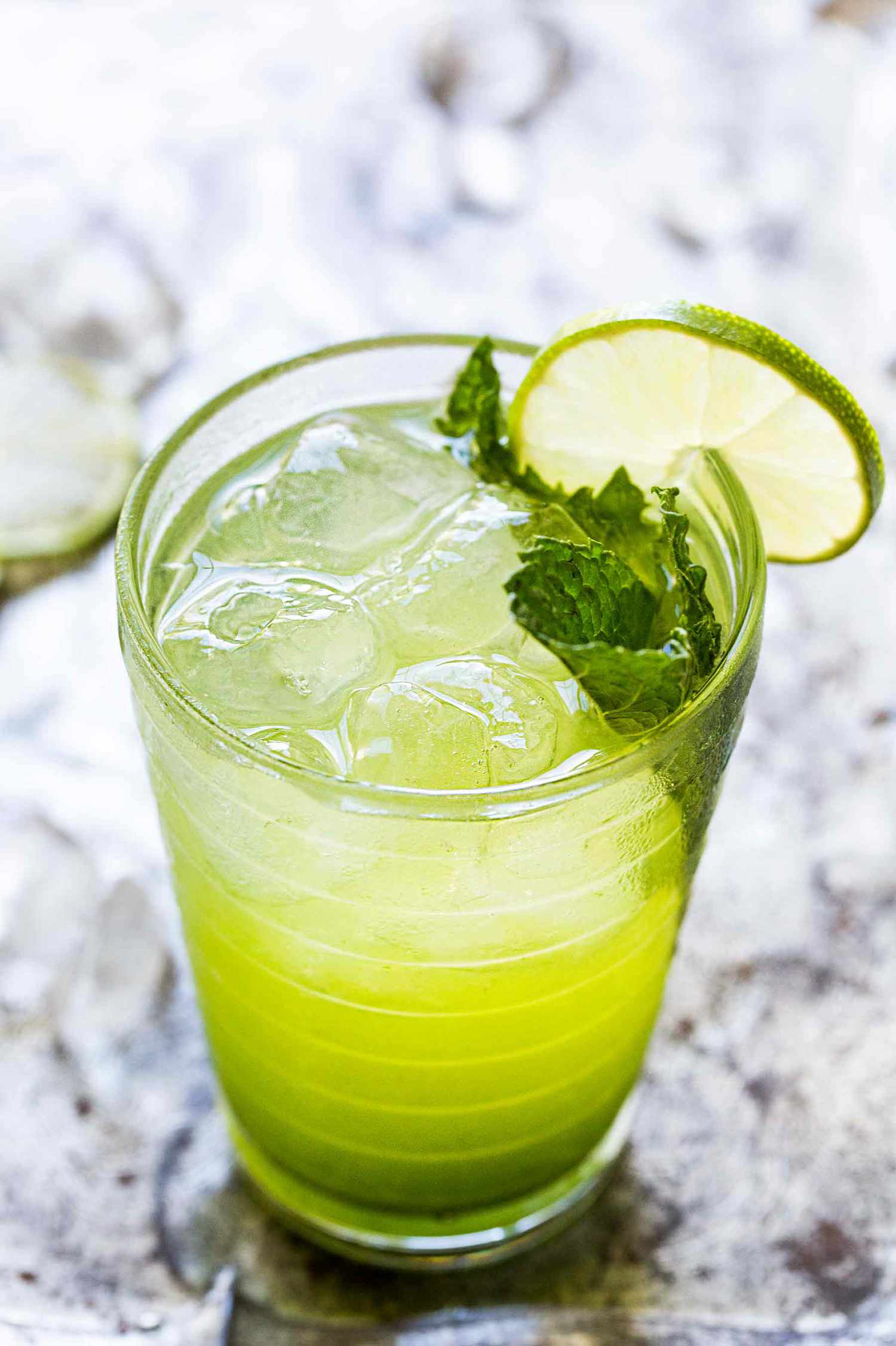
 www.simplyrecipes.com
www.simplyrecipes.com

Make the Perfect Mojito With the Help of a Simple Kitchen Tool
The best fresh mint mojitos are made by steeping crushed mint in sugar and rum. So refreshing and minty! This rum cocktail hits the spot on a hot summer day.
ataxian
In a BLACK HOLE!
ROSIN & WINE = CIVILIZED ACTIONCojito aka mojito

Make the Perfect Mojito With the Help of a Simple Kitchen Tool
The best fresh mint mojitos are made by steeping crushed mint in sugar and rum. So refreshing and minty! This rum cocktail hits the spot on a hot summer day.www.simplyrecipes.com
MEXICO MODELO NEGRA before the night get’s started!
CANNABIS is 4 CIVILIZATION!
BLACK HOLE’s R da kine!
GOLF in EUROPE is so fun?
Last edited:
Have mercy..... must have......

bulllee
Well-Known Member
Know anyone who likes Tequila ?
https://minimalistbaker.com/chili-lime-mango-margaritas/
Chili Lime Mango Margaritas
Simple mango margaritas with orange, lime, agave, and silver tequila! Cold, sweet, tangy, and subtly spiced. Perfect for Mexican food and warm weather!
AuthorMinimalist Baker
PRINT
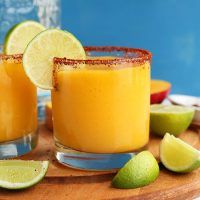
4.92 from 12 votes
PREP TIME10 minutes
TOTAL TIME10 minutes
Servings (margaritas)
CourseBeverage
CuisineMexican-Inspired, Vegan
Freezer FriendlyNo
Does it keep?Best when fresh
Ingredients
US Customary - Metric
MARGARITAS
*To make a frozen blended margarita, you could also start with frozen mangos and omit the ice as instructed!
*Nutrition information is a rough estimate.
Nutrition (1 of 3 servings)
Serving: 1 margaritasCalories: 195Carbohydrates: 26.5 gProtein: 1 gFat: 0.4 gSaturated Fat: 0 gTrans Fat: 0 gCholesterol: 0 mgSodium: 740 mgFiber: 1.4 gSugar: 30 g
did you make this recipe?
If you can't get fresh mango where your at you should be able to buy "Goya" mango nectar in the juice aisle or where ever you find hispanic foods.

https://minimalistbaker.com/chili-lime-mango-margaritas/
Chili Lime Mango Margaritas
Simple mango margaritas with orange, lime, agave, and silver tequila! Cold, sweet, tangy, and subtly spiced. Perfect for Mexican food and warm weather!
AuthorMinimalist Baker

4.92 from 12 votes
PREP TIME10 minutes
TOTAL TIME10 minutes
Servings (margaritas)
CourseBeverage
CuisineMexican-Inspired, Vegan
Freezer FriendlyNo
Does it keep?Best when fresh
Ingredients
US Customary - Metric
MARGARITAS
- 1 ripe mango (cubed // 1 mango yields ~1 cup or 157 g)*
- 1 cup orange juice
- 2 small limes (juiced // ~1 ounce)
- 2.5 -3 ounces silver tequila (depending on preferred strength of drink)
- 1 ounce triple sec or orange liqueur
- 1 dash hot sauce (optional)
- 1-3 Tbsp agave nectar or maple syrup (depending on sweetness of mango)
- 1 lime wedge for rimming
- 1 tsp chili powder
- 1/4 tsp sea salt
- Add all margarita ingredients to a blender and blend until creamy and smooth. Taste and adjust sweetness / strength of alcohol as desired.
- To chill, either blend in a large handful of ice cubes to make a frozen margarita or transfer half of the mixture to a cocktail shaker with plenty of ice and shake vigorously.
- Rim serving glasses with a lime wedge and immediately dip in salt/chili powder mixture (or sub just salt or sugar), and fill with 1 large ice cube or several small. Pour over margarita and garnish with lime wedge.
*To make a frozen blended margarita, you could also start with frozen mangos and omit the ice as instructed!
*Nutrition information is a rough estimate.
Nutrition (1 of 3 servings)
Serving: 1 margaritasCalories: 195Carbohydrates: 26.5 gProtein: 1 gFat: 0.4 gSaturated Fat: 0 gTrans Fat: 0 gCholesterol: 0 mgSodium: 740 mgFiber: 1.4 gSugar: 30 g
did you make this recipe?
If you can't get fresh mango where your at you should be able to buy "Goya" mango nectar in the juice aisle or where ever you find hispanic foods.

Last edited:
bulllee
Well-Known Member
https://punchdrink.com/articles/don...wn&utm_medium=Email&cid=120506&mid=1955808540
Don’t Call It “Sparkling Wine”
In record time, the category has become freewheeling and heterogeneous, with a mix of techniques, traditions and regional iterations. That's a good thing.
FEBRUARY 10, 2020
story: ZACHARY SUSSMAN
illustration: CARMELA CALDART
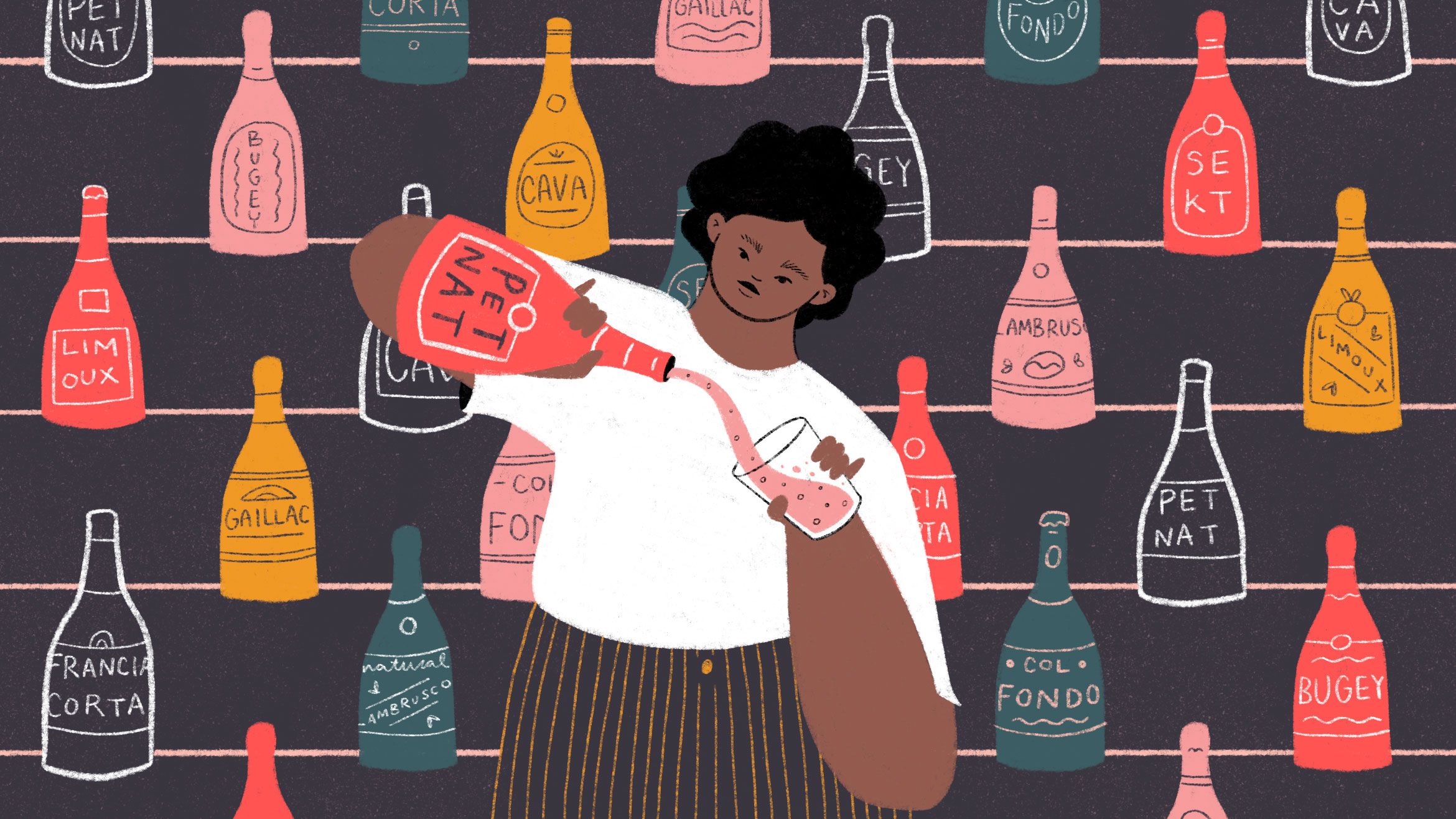
We’ve all encountered that guy at the dinner party—in my experience, it’s always a guy—who makes a big show of correcting you for calling the sparkling wine in your glass “Champagne” when it comes from somewhere outside the celebrated region of France.
In 2017, however, a Canadian by the name of Daniel MacDuff took this standard wine snob microaggression to an extreme when he filed for damages against Sunwing Airlines, a Toronto-based budget carrier, for serving passengers a generic sparkling wine in place of the advertised “complimentary onboard champagne toast.” Given the nature of the offense, a class-action lawsuit definitely seems excessive. (The airline dismissed MacDuff’s case as “frivolous and without merit.”) Nevertheless, there’s a lesson to be gleaned from the incident.
Typically, when someone winesplains that common talking point about Champagne’s delimited zone of production, the implication is that, in the words of the 1968 Marvin Gaye and Tammi Terrell hit, “There ain’t nothing like the real thing.” The real thing, of course, being the French original. Across the ages—really, ever since 1683, when according to local legend (aka early marketing spin), a Benedictine monk by the name of Dom Pérignon first invented the stuff—the famous French region has been synonymous with sparkling wine.
You could forgive Sunwing for using the “C” word to delineate the entire category. People have been making the same mistake forever. But if Champagne once represented the sole archetype for all things bubbly, all it takes is a quick survey of today’s diverse sparkling wine landscape to reveal how radically that paradigm has shifted. Long gone, in other words, are the Dark Ages remembered by Brooklyn-based retailer Talitha Whidbee, who launched her shop, Vine Wine, in 2005.
“When I first opened the store, it was like there was Champagne, and there was prosecco, and that was it,” she recalls. “You bought prosecco when you were having brunch, and you bought Champagne when it was a special occasion.”
Since then, her selection has expanded to over 60 different sparklers from all corners of the globe, and the old rules of engagement with the category have been discarded and written anew. We’ve broken sparkling wine out of its holiday playpen, and with that liberation has emerged a whole new kaleidoscope of styles, from brut zero (un-dosed) single-vineyard Champagne to pétillant naturel (aka “pét-nat”) to natural lambrusco and more.
In surveying the progress we’ve made, it’s impossible to pinpoint any single cause or unifying narrative to explain how we got here—and so quickly. We can, however, identify a few overlapping developments that have shaped the current zeitgeist. For one, after resisting change for hundreds of years, Champagne itself has undergone a massive cultural reorganization. The history of the “grower” movement, which emerged in the region during the 1990s and symbolically transferred the balance of power away from the large corporate brands and into the hands of independent producers, is already well-documented. Less has been said, however, about how these efforts have reshaped attitudes toward bubbly wine as a whole.
By making their wines more accessible and transparent—and in doing so, insisting upon Champagne as an agricultural product, rather than a luxury good—the leaders of the grower revolution paved the way for a deeper consideration of sparkling wine as an expression of terroir, just like still wine. This lesson, of course, is applicable beyond the hallowed borders of Champagne. To appreciate the differences between, say, a sparkling wine from the Jura and another from Savoie is part and parcel of getting a fuller picture of the identities of each area.
“There’s a wider understanding and appreciation of the truth of place for sparkling wines, and where they fit into the bigger context of a region,” explains Kevin McKenna of natural wine importer Louis/Dressner. “Now we look at, for instance, [celebrated Jura winemaker Stéphane] Tissot’s crémant as an expression of Tissot, and of the Jura—not as a substitute for Champagne.”
At the same time, an important part of that education is recognizing that, in addition to coming from distinct places, sparkling wine is produced through a range of methods, of which the so-called “traditional” or Champagne method is just one example. Among the various techniques for getting bubbles to materialize in a wine, the one used to make Champagne (and Cava, Franciacorta and French crémant, among others) is by far the most costly and time-consuming, requiring the winemaker to enact a secondary fermentation within each individual bottle. The payoff is that the practice typically yields the most complex and refined results. But classical elegance isn’t always what we’re looking for in our fizz. In fact, many of the wines that have gained traction on restaurant lists and shop shelves of late owe their carbonation to a technique that pre-dates Champagne by at least a couple centuries.
I’m referring to the meteoric rise of pét-nat, natural wine’s signature contribution to the sparkling wine family—and with it, the reclamation of the style’s “ancestral method” of fermentation, whereby the primary fermentation finishes in the bottle, naturally. As a way to make fun, inexpensive bubbly with a relevance beyond mass-produced prosecco, the ancestral method has ushered in a whole new wave of retro-minded sparklers, further toppling the wider category from the pedestal that Champagne erected.
We’ve all witnessed firsthand how quickly the pét-nat genre has exploded from the heart of the fringe to the height of fashion, spreading beyond its home base in France’s Loire Valley to claim outposts just about everywhere the natural-wine movement’s gospel is preached. As a repackaged name for an ancient concept, however, the trend has brought renewed attention to ancestral-method wines with deep historic roots in the rural areas of France and Italy where they’ve been produced for generations—long before anyone ever coined the term “pét-nat.”
Though they tend to get lumped together under that fashionable label, these wines constitute a sparkling tradition in their own right. This is the spirit in which to consider, for instance, the revival of tart bottle-fermented lambrusco and col fondo prosecco (often released with the sediment intact), both of which represent pre-industrial throwbacks to the wines these areas produced in the past. There’s also the slightly sweet, pinkish sparklers of the Savoie’s Bugey, as well as ancestral-method examples from the southern French regions of Limoux, Gaillac and the Rhône valley’s Diois.
This hardly begins to capture the full array of wines that fall under the sparkling umbrella. Right now, we’re in the midst of a mini-renaissance of piquette, the low-alcohol farmhouse sparkler traditionally produced from leftover grape pomace. England, of all places, is making top-notch examples (just in time for Brexit), to say nothing of the explosion of ambitious New World efforts from Oregon, California and the entire southern hemisphere. We even have sparkling wine in cans.
Considering this diversity, one wonders if it’s still possible to consider “sparkling wine” a unified category in the way it once was. Just as it would be silly to generalize about “red wine” as a single entity, rather than a continuum that runs the gamut from fresh carbonically macerated Beaujolais to lean, structured Barolo and everything in between, the world of sparkling wine no longer fits into one uniform bubble (sorry, couldn’t resist). It is a freewheeling, heterogeneous whole, with a mix of techniques and traditions and regional iterations.
In all likelihood, there will always be that dude at the wedding reception who chides the person next to him with that familiar refrain about Champagne. But the next time you happen to overhear him, rather than just rolling your eyes, why not reply with a follow-up question: So, what are we actually drinking, then?
Now more than ever, “sparkling wine” just won’t cut it.
Don’t Call It “Sparkling Wine”
In record time, the category has become freewheeling and heterogeneous, with a mix of techniques, traditions and regional iterations. That's a good thing.
FEBRUARY 10, 2020
story: ZACHARY SUSSMAN
illustration: CARMELA CALDART

We’ve all encountered that guy at the dinner party—in my experience, it’s always a guy—who makes a big show of correcting you for calling the sparkling wine in your glass “Champagne” when it comes from somewhere outside the celebrated region of France.
In 2017, however, a Canadian by the name of Daniel MacDuff took this standard wine snob microaggression to an extreme when he filed for damages against Sunwing Airlines, a Toronto-based budget carrier, for serving passengers a generic sparkling wine in place of the advertised “complimentary onboard champagne toast.” Given the nature of the offense, a class-action lawsuit definitely seems excessive. (The airline dismissed MacDuff’s case as “frivolous and without merit.”) Nevertheless, there’s a lesson to be gleaned from the incident.
Typically, when someone winesplains that common talking point about Champagne’s delimited zone of production, the implication is that, in the words of the 1968 Marvin Gaye and Tammi Terrell hit, “There ain’t nothing like the real thing.” The real thing, of course, being the French original. Across the ages—really, ever since 1683, when according to local legend (aka early marketing spin), a Benedictine monk by the name of Dom Pérignon first invented the stuff—the famous French region has been synonymous with sparkling wine.
You could forgive Sunwing for using the “C” word to delineate the entire category. People have been making the same mistake forever. But if Champagne once represented the sole archetype for all things bubbly, all it takes is a quick survey of today’s diverse sparkling wine landscape to reveal how radically that paradigm has shifted. Long gone, in other words, are the Dark Ages remembered by Brooklyn-based retailer Talitha Whidbee, who launched her shop, Vine Wine, in 2005.
“When I first opened the store, it was like there was Champagne, and there was prosecco, and that was it,” she recalls. “You bought prosecco when you were having brunch, and you bought Champagne when it was a special occasion.”
Since then, her selection has expanded to over 60 different sparklers from all corners of the globe, and the old rules of engagement with the category have been discarded and written anew. We’ve broken sparkling wine out of its holiday playpen, and with that liberation has emerged a whole new kaleidoscope of styles, from brut zero (un-dosed) single-vineyard Champagne to pétillant naturel (aka “pét-nat”) to natural lambrusco and more.
In surveying the progress we’ve made, it’s impossible to pinpoint any single cause or unifying narrative to explain how we got here—and so quickly. We can, however, identify a few overlapping developments that have shaped the current zeitgeist. For one, after resisting change for hundreds of years, Champagne itself has undergone a massive cultural reorganization. The history of the “grower” movement, which emerged in the region during the 1990s and symbolically transferred the balance of power away from the large corporate brands and into the hands of independent producers, is already well-documented. Less has been said, however, about how these efforts have reshaped attitudes toward bubbly wine as a whole.
By making their wines more accessible and transparent—and in doing so, insisting upon Champagne as an agricultural product, rather than a luxury good—the leaders of the grower revolution paved the way for a deeper consideration of sparkling wine as an expression of terroir, just like still wine. This lesson, of course, is applicable beyond the hallowed borders of Champagne. To appreciate the differences between, say, a sparkling wine from the Jura and another from Savoie is part and parcel of getting a fuller picture of the identities of each area.
“There’s a wider understanding and appreciation of the truth of place for sparkling wines, and where they fit into the bigger context of a region,” explains Kevin McKenna of natural wine importer Louis/Dressner. “Now we look at, for instance, [celebrated Jura winemaker Stéphane] Tissot’s crémant as an expression of Tissot, and of the Jura—not as a substitute for Champagne.”
At the same time, an important part of that education is recognizing that, in addition to coming from distinct places, sparkling wine is produced through a range of methods, of which the so-called “traditional” or Champagne method is just one example. Among the various techniques for getting bubbles to materialize in a wine, the one used to make Champagne (and Cava, Franciacorta and French crémant, among others) is by far the most costly and time-consuming, requiring the winemaker to enact a secondary fermentation within each individual bottle. The payoff is that the practice typically yields the most complex and refined results. But classical elegance isn’t always what we’re looking for in our fizz. In fact, many of the wines that have gained traction on restaurant lists and shop shelves of late owe their carbonation to a technique that pre-dates Champagne by at least a couple centuries.
I’m referring to the meteoric rise of pét-nat, natural wine’s signature contribution to the sparkling wine family—and with it, the reclamation of the style’s “ancestral method” of fermentation, whereby the primary fermentation finishes in the bottle, naturally. As a way to make fun, inexpensive bubbly with a relevance beyond mass-produced prosecco, the ancestral method has ushered in a whole new wave of retro-minded sparklers, further toppling the wider category from the pedestal that Champagne erected.
We’ve all witnessed firsthand how quickly the pét-nat genre has exploded from the heart of the fringe to the height of fashion, spreading beyond its home base in France’s Loire Valley to claim outposts just about everywhere the natural-wine movement’s gospel is preached. As a repackaged name for an ancient concept, however, the trend has brought renewed attention to ancestral-method wines with deep historic roots in the rural areas of France and Italy where they’ve been produced for generations—long before anyone ever coined the term “pét-nat.”
Though they tend to get lumped together under that fashionable label, these wines constitute a sparkling tradition in their own right. This is the spirit in which to consider, for instance, the revival of tart bottle-fermented lambrusco and col fondo prosecco (often released with the sediment intact), both of which represent pre-industrial throwbacks to the wines these areas produced in the past. There’s also the slightly sweet, pinkish sparklers of the Savoie’s Bugey, as well as ancestral-method examples from the southern French regions of Limoux, Gaillac and the Rhône valley’s Diois.
This hardly begins to capture the full array of wines that fall under the sparkling umbrella. Right now, we’re in the midst of a mini-renaissance of piquette, the low-alcohol farmhouse sparkler traditionally produced from leftover grape pomace. England, of all places, is making top-notch examples (just in time for Brexit), to say nothing of the explosion of ambitious New World efforts from Oregon, California and the entire southern hemisphere. We even have sparkling wine in cans.
Considering this diversity, one wonders if it’s still possible to consider “sparkling wine” a unified category in the way it once was. Just as it would be silly to generalize about “red wine” as a single entity, rather than a continuum that runs the gamut from fresh carbonically macerated Beaujolais to lean, structured Barolo and everything in between, the world of sparkling wine no longer fits into one uniform bubble (sorry, couldn’t resist). It is a freewheeling, heterogeneous whole, with a mix of techniques and traditions and regional iterations.
In all likelihood, there will always be that dude at the wedding reception who chides the person next to him with that familiar refrain about Champagne. But the next time you happen to overhear him, rather than just rolling your eyes, why not reply with a follow-up question: So, what are we actually drinking, then?
Now more than ever, “sparkling wine” just won’t cut it.
bulllee
Well-Known Member
https://punchdrink.com/recipes/oaxa...wn&utm_medium=Email&cid=120835&mid=1960190202
Oaxaca Old-Fashioned
Phil Ward | Death & Company
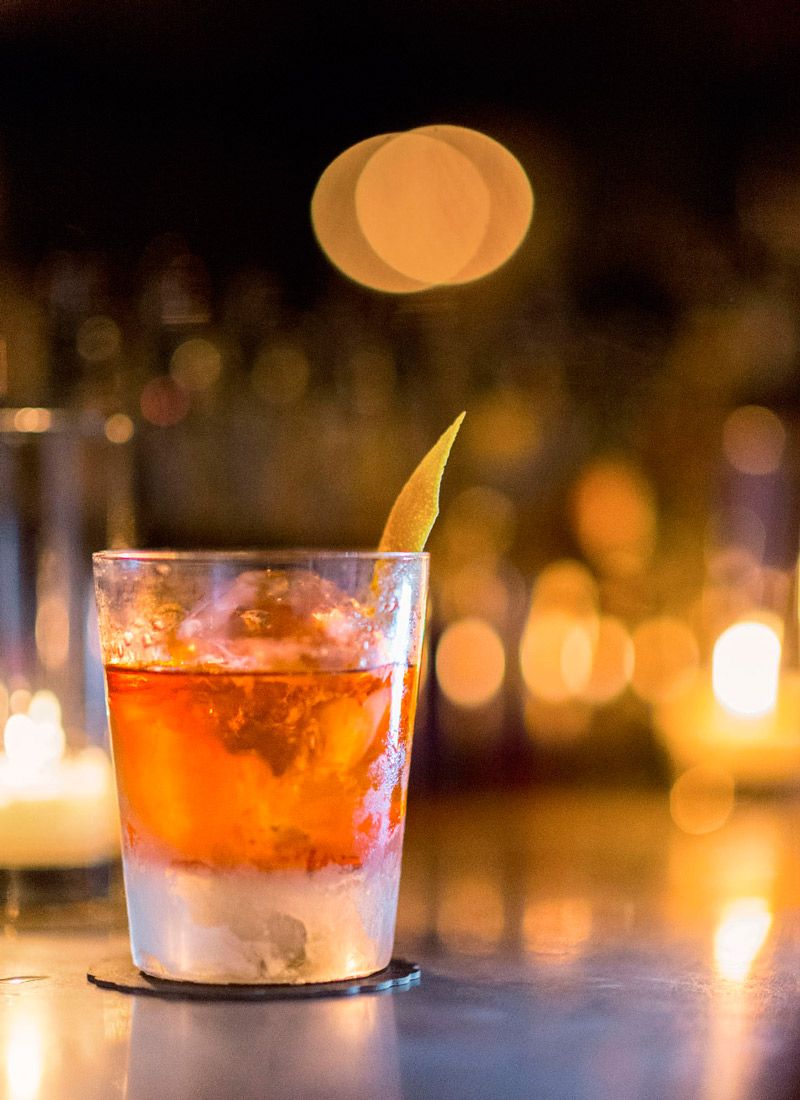
This is the drink that opened the American mixology world’s eyes to the potential of using tequila and mezcal in cocktails. According to Angus Winchester, British bartenders were making Old-Fashioneds with tequila much earlier. But if they were, the drinks were thrown down the gullet unnamed and unsung, and they likely didn’t contain mezcal. Ward called it his eureka moment when he figured out, regarding mezcal, “this shit works.” It has inspired countless imitations, with different names, but essentially the same recipe.
Reprinted with permission from A Proper Drink by Robert Simonson, copyright © 2016. Published by Ten Speed Press, a division of Penguin Random House.
INGREDIENTS
Serving: 1
DIRECTIONS
Oaxaca Old-Fashioned
Phil Ward | Death & Company

This is the drink that opened the American mixology world’s eyes to the potential of using tequila and mezcal in cocktails. According to Angus Winchester, British bartenders were making Old-Fashioneds with tequila much earlier. But if they were, the drinks were thrown down the gullet unnamed and unsung, and they likely didn’t contain mezcal. Ward called it his eureka moment when he figured out, regarding mezcal, “this shit works.” It has inspired countless imitations, with different names, but essentially the same recipe.
Reprinted with permission from A Proper Drink by Robert Simonson, copyright © 2016. Published by Ten Speed Press, a division of Penguin Random House.
INGREDIENTS
Serving: 1
- 1 1/2 ounces El Tesoro reposado tequila
- 1/2 ounce Del Maguey San Luis Del Rio mezcal
- 2 dashes Angostura bitters
- 1 barspoon agave nectar
DIRECTIONS
- Combine all the ingredients except the orange twist in an Old-Fashioned glass filled with one large ice cube.
- Stir until chilled.
- Top with a flamed orange twist, then drop the twist into the drink.
bulllee
Well-Known Member
https://punchdrink.com/articles/sci...wn&utm_medium=Email&cid=120886&mid=1960871779
Science Your Way to a Better Frozen Drink
Though bars often rely on commercial-grade machines to make slushy drinks, a blender can work just as well. Here, the White Lyan team shares simple rules and recipes for making better frozen cocktails at home.
JULY 27, 2017
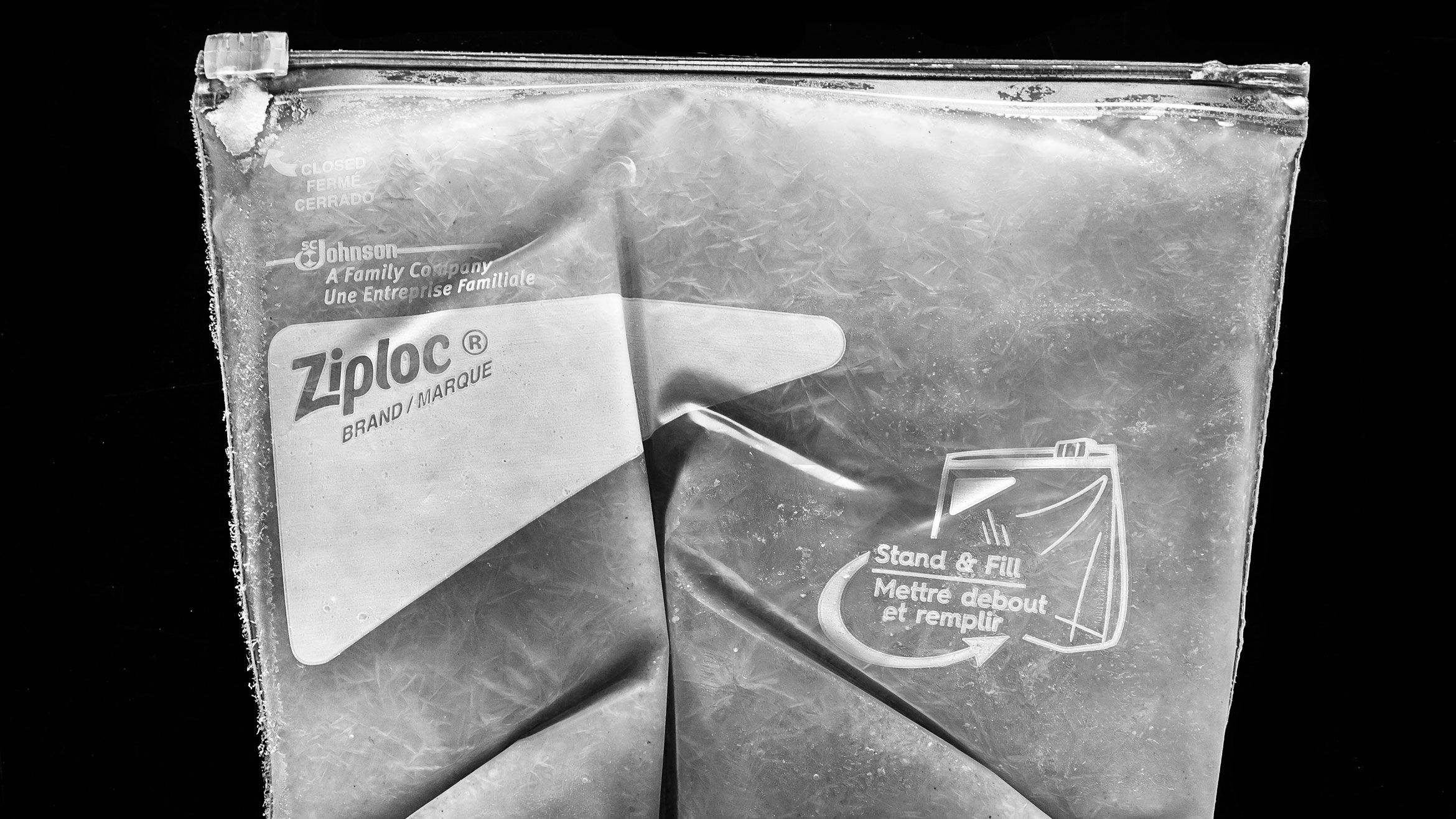
It’s hard to deny the party-starting potential of the frozen cocktail. In recent years, slushy machines hacked for adult serves have become a common sight in bars around the world. And in turn, the canon of frozen drinks has expanded far beyond the Piña Colada.
Although frozen drinks weren’t part of White Lyan’s repertoire (and, sadly, there’s no space to fit a slushy machine in Dandelyan’s crowded backbar), from Death by Burrito to the launch of Method and Madness, we’ve used them to inject a playful tone into the drinks programs and events we’ve executed around London and further afield.
While most bars lean on commercial slushy machines to chill the mixture and prevent the cocktail from freezing into a block, most frozen formulas can be executed with a blender—whether you’re blending with ice or freezing the mixture ahead and whirring it before serving. (If the recipe calls for the former, note that the average blender won’t take well to cubed ice, so lean on crushed.)
Regardless of the method, the main factors you’ll want to control are alcohol, dilution and sugar content. All three will have a significant effect on the freezing point and balance of your drink.
ABV
The perfect balance of the drink is in the consistency of the slush, and getting it just right is often dependent on ABV: too high an alcoholic strength will push the freezing point below the realms of a domestic freezer, but too low will leave you with a flavored block of ice. A drink that falls around a total ABV of 10 percent (think a weaker highball—1 ounce 80-proof spirit to 3 ounces mixer—or a spritz), is ideal for frozen drinks. The perfect serving temp for a frozen drink is around -2.2°C/28°F, and a 10-percent-ABV serve will freeze at -4°C/25°F, so this is a good mark to aim for if you’re freezing the mixture ahead and flash blending. A boozy drink like a Negroni, for example, will not freeze unless you take it to very low temperatures; it will also suppress the perception of alcohol (i.e. cold numbs the taste receptors and trigeminal nerve, which can lead to over-consumption). If you want to make a frozen Negroni, it’s wise to dial back the ABV through the addition of a mixer like blood orange juice.
Sweetness
While acidity tends to remain constant in a frozen cocktail, bitterness and sweetness are both suppressed by temperature. The colder temperature requires a higher positive charge in the receptors in your palate (which the “sweet-tasting” molecules bind to) to activate, which in turn releases neurotransmitters signaling “sweet” to the brain. In other words, cold drinks needs more sweetness to achieve the correct balance. The best drinks combat this extra sweetness with acidity, hence the adaptability of the Daiquiri or the Margarita to a frozen format. A good rule of thumb when adapting something like the Daiquiri is to increase sugar content by 50 percent (e.g. add 3/4 ounce of simple syrup as opposed to a 1/2 ounce). If you’re using the freeze-ahead method and you happen to have a refractometer (or want to buy one), the ideal balance for a frozen drink is 13 grams of sugar per 100 grams of liquid—or 13 Brix. Just bear in mind that refractometers don’t like particulates, so creamy or pulpy drinks might throw off readings.
Dilution
You will need extra dilution in your drink to get it to slushy texture, which can be achieved in two ways. Although it might seem simplest to blend with crushed ice, this requires you to move fast; if your ingredients aren’t cold enough when combined with ice in the blender, and whirred quickly, you’ll risk the drink hitting the table with the wrong consistency. So, start with very cold ingredients: place your spirits (above 70 proof) in the freezer and other ingredients in the fridge, use a measured amount of crushed ice (like we call for in our Piña Colada and Boozeless Margarita) and blend quickly. Alternatively, you can achieve greater control by pre-diluting your mix and freezing it like a granita. The drink will freeze into a pliable mass in your freezer, but it can be quickly agitated—either by whipping by hand or in a blender—for service.
Science Your Way to a Better Frozen Drink
Though bars often rely on commercial-grade machines to make slushy drinks, a blender can work just as well. Here, the White Lyan team shares simple rules and recipes for making better frozen cocktails at home.
JULY 27, 2017

It’s hard to deny the party-starting potential of the frozen cocktail. In recent years, slushy machines hacked for adult serves have become a common sight in bars around the world. And in turn, the canon of frozen drinks has expanded far beyond the Piña Colada.
Although frozen drinks weren’t part of White Lyan’s repertoire (and, sadly, there’s no space to fit a slushy machine in Dandelyan’s crowded backbar), from Death by Burrito to the launch of Method and Madness, we’ve used them to inject a playful tone into the drinks programs and events we’ve executed around London and further afield.
While most bars lean on commercial slushy machines to chill the mixture and prevent the cocktail from freezing into a block, most frozen formulas can be executed with a blender—whether you’re blending with ice or freezing the mixture ahead and whirring it before serving. (If the recipe calls for the former, note that the average blender won’t take well to cubed ice, so lean on crushed.)
Regardless of the method, the main factors you’ll want to control are alcohol, dilution and sugar content. All three will have a significant effect on the freezing point and balance of your drink.
ABV
The perfect balance of the drink is in the consistency of the slush, and getting it just right is often dependent on ABV: too high an alcoholic strength will push the freezing point below the realms of a domestic freezer, but too low will leave you with a flavored block of ice. A drink that falls around a total ABV of 10 percent (think a weaker highball—1 ounce 80-proof spirit to 3 ounces mixer—or a spritz), is ideal for frozen drinks. The perfect serving temp for a frozen drink is around -2.2°C/28°F, and a 10-percent-ABV serve will freeze at -4°C/25°F, so this is a good mark to aim for if you’re freezing the mixture ahead and flash blending. A boozy drink like a Negroni, for example, will not freeze unless you take it to very low temperatures; it will also suppress the perception of alcohol (i.e. cold numbs the taste receptors and trigeminal nerve, which can lead to over-consumption). If you want to make a frozen Negroni, it’s wise to dial back the ABV through the addition of a mixer like blood orange juice.
Sweetness
While acidity tends to remain constant in a frozen cocktail, bitterness and sweetness are both suppressed by temperature. The colder temperature requires a higher positive charge in the receptors in your palate (which the “sweet-tasting” molecules bind to) to activate, which in turn releases neurotransmitters signaling “sweet” to the brain. In other words, cold drinks needs more sweetness to achieve the correct balance. The best drinks combat this extra sweetness with acidity, hence the adaptability of the Daiquiri or the Margarita to a frozen format. A good rule of thumb when adapting something like the Daiquiri is to increase sugar content by 50 percent (e.g. add 3/4 ounce of simple syrup as opposed to a 1/2 ounce). If you’re using the freeze-ahead method and you happen to have a refractometer (or want to buy one), the ideal balance for a frozen drink is 13 grams of sugar per 100 grams of liquid—or 13 Brix. Just bear in mind that refractometers don’t like particulates, so creamy or pulpy drinks might throw off readings.
Dilution
You will need extra dilution in your drink to get it to slushy texture, which can be achieved in two ways. Although it might seem simplest to blend with crushed ice, this requires you to move fast; if your ingredients aren’t cold enough when combined with ice in the blender, and whirred quickly, you’ll risk the drink hitting the table with the wrong consistency. So, start with very cold ingredients: place your spirits (above 70 proof) in the freezer and other ingredients in the fridge, use a measured amount of crushed ice (like we call for in our Piña Colada and Boozeless Margarita) and blend quickly. Alternatively, you can achieve greater control by pre-diluting your mix and freezing it like a granita. The drink will freeze into a pliable mass in your freezer, but it can be quickly agitated—either by whipping by hand or in a blender—for service.
bulllee
Well-Known Member
Friday and it's margarita time. Idk but I think there's one or two of you out there that likes the Tequila ! 

https://punchdrink.com/articles/bui...wn&utm_medium=Email&cid=121262&mid=1965747318
Build a Better Frozen Margarita
From proper dilution to uniform texture, here’s how to make the perfect blender drink.
JULY 7, 2020
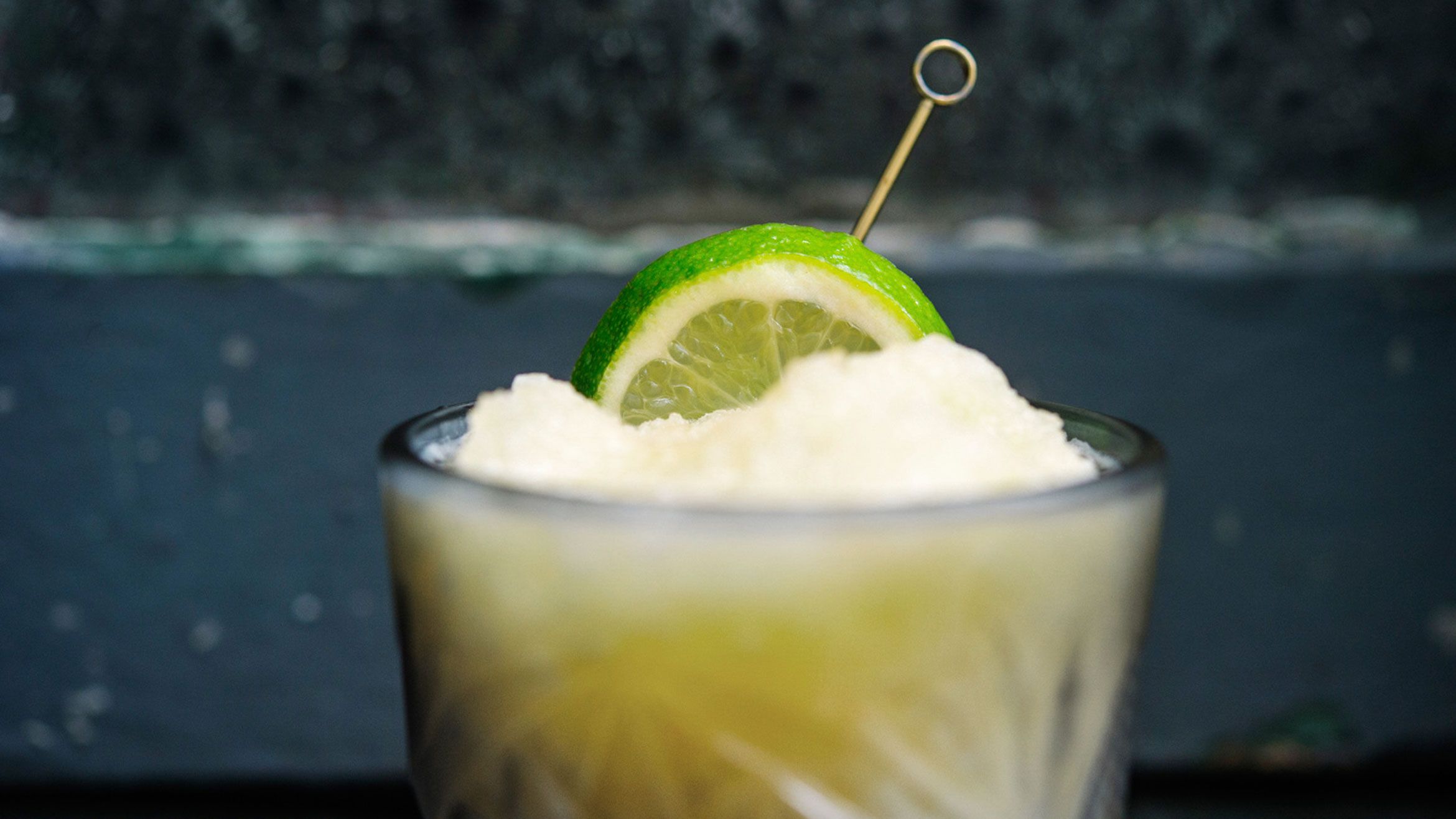
Afrozen drink is only as good as its ingredients and the equipment it’s made with. But normal levels of texture, dilution and sweetness all go out the window when it comes to blended drinks, and nailing the optimal ratio can be especially tricky at home.
The frozen Margarita machine, converted from a soft-serve dispenser by Dallas restaurateur Mariano Martinez in 1971, provided the template for the equipment. Nearly 50 years later, Travis Tober, co-owner of Austin’s Nickel City (who also did a five-year stint as a corporate trainer for TGI Fridays), recommends going with a Vitamix or the “old-school, three-speed Hamilton Beach HBB908 commercial bar blender, the kind still used in Cuba’s best Daiquiri bars.”
Mike Capoferri, of Los Angeles’ Thunderbolt, and Kirk Estopinal, of Cure and Cane & Table in New Orleans, are also devoted to the Vitamix. Estopinal notes that Vitamix sells deeply discounted refurbished machines with a five-year warranty, but “a good Waring blender will also get you where you want to go.” (Mariano Martinez’s father, who codified the frozen Margarita in 1938, made his drinks in a standard Waring blender.)
Ice is another crucial variable. Many bartenders will say crushed is preferable over cubed because it breaks up easily and quickly, but it can also overdilute a drink. Oversized cubes are problematic because they take too long to break down, and can wreck a noncommercial blender. Estopinal likes to use pebble ice, which breaks down efficiently without risking overdilution. He recommends finding a Sonic Drive-In, which carries pebble ice made in a machine called a Scotsman. “When you’re not using a commercial blender, added water is not your friend, so it’s the ice size and amount that matter,” he says.
Tober, for his part, is less concerned with ice shape than he is flavor. “Because frozen cocktails are about 20 to 25 percent water when blended, you should never add anything to the build that doesn’t have flavor,” he says. Nickel City uses orange pekoe tea cubes in its frozen Margaritas, chai cubes in Piña Coladas and chocolate tea cubes in its frozen Irish coffee.
Besides ice, tequila can make or break a frozen margarita. Estopinal suggests using a spirit between 80 and 90 proof to keep the cocktail balanced. “My philosophy is to achieve a concentration of flavor, sweetness in balance with acidity and fruity aromatics from the citrus,” he says. Capoferri, meanwhile, recommends skewing sweet when making any frozen cocktail, to compensate for dilution. “You’ll always need more than you think,” he says, “so I generally use one part sweet to three-quarter parts acid.” (Martinez added simple syrup to his converted Margarita machine to help with freezing, too.)
At Nickel City, Tober uses a 3:1 blend of Persian and Key lime juices (both varieties are available at most Latin markets), and equal parts Cointreau and simple syrup to balance sweetness and acidity. For other frozen cocktails, Estopinal says pasteurized or store-bought juice is “okay, and sometimes way better” than fresh, depending upon the season and availability. “A lot of frozen drinks just taste like the sound of recording a band with the microphone next door under a cardboard box. A good frozen should have space and vibrancy.”
When building the drink, add the liquid components to the blender first, followed by the ice. Tober blends on the lowest speed for five seconds, then hits high speed for 10 seconds. “That seems to be the sweet spot,” he says. “Any longer and you’ll heat the ingredients, resulting in a watery drink.” He recommends pouring the mixture, with a “barely melted soft-serve” consistency, into a pre-chilled glass, preferably YETI’s insulated tumblers for backyard barbecues. At the bar, he prefers 15-ounce goblets. “You want something with thick walls to keep the drink cold.”
Garnished with a salted rim and lime wheel, the frozen Margarita is more than a happy hour staple or hot weather refresher: It’s an enduring symbol of carefree hedonism, no plane ticket (or mask) required.
The ideal consistency should be that of “barely melted soft-serve ice cream,” says Travis Tober, co-owner of Austin’s Nickel City. He recommends using a Vitamix or three-speed Hamilton Beach HBB908 commercial bar blender, but ice, he believes, is the most critical ingredient. “All frozen cocktails are about 20 to 25 percent water when blended, so don’t add anything to the build that doesn’t have flavor,” he says. He uses orange pekoe tea cubes to complement the Cointreau and add a touch of tannin. Blending Persian and Key lime juices with simple syrup balances acidity with sweetness. To build, he adds the liquid ingredients to the blender first, followed by ice. Serve in a pre-chilled insulated tumbler or 15-ounce goblet, garnished with a salted rim and lime wheel.
INGREDIENTS
DIRECTIONS
"Iced Tea" Cubes
Make a weak tea by steeping 1 bag orange pekoe in 32 ounces of water. Pour tea into standard ice cube trays and freeze.


https://punchdrink.com/articles/bui...wn&utm_medium=Email&cid=121262&mid=1965747318
Build a Better Frozen Margarita
From proper dilution to uniform texture, here’s how to make the perfect blender drink.
JULY 7, 2020

Afrozen drink is only as good as its ingredients and the equipment it’s made with. But normal levels of texture, dilution and sweetness all go out the window when it comes to blended drinks, and nailing the optimal ratio can be especially tricky at home.
The frozen Margarita machine, converted from a soft-serve dispenser by Dallas restaurateur Mariano Martinez in 1971, provided the template for the equipment. Nearly 50 years later, Travis Tober, co-owner of Austin’s Nickel City (who also did a five-year stint as a corporate trainer for TGI Fridays), recommends going with a Vitamix or the “old-school, three-speed Hamilton Beach HBB908 commercial bar blender, the kind still used in Cuba’s best Daiquiri bars.”
Mike Capoferri, of Los Angeles’ Thunderbolt, and Kirk Estopinal, of Cure and Cane & Table in New Orleans, are also devoted to the Vitamix. Estopinal notes that Vitamix sells deeply discounted refurbished machines with a five-year warranty, but “a good Waring blender will also get you where you want to go.” (Mariano Martinez’s father, who codified the frozen Margarita in 1938, made his drinks in a standard Waring blender.)
Ice is another crucial variable. Many bartenders will say crushed is preferable over cubed because it breaks up easily and quickly, but it can also overdilute a drink. Oversized cubes are problematic because they take too long to break down, and can wreck a noncommercial blender. Estopinal likes to use pebble ice, which breaks down efficiently without risking overdilution. He recommends finding a Sonic Drive-In, which carries pebble ice made in a machine called a Scotsman. “When you’re not using a commercial blender, added water is not your friend, so it’s the ice size and amount that matter,” he says.
Tober, for his part, is less concerned with ice shape than he is flavor. “Because frozen cocktails are about 20 to 25 percent water when blended, you should never add anything to the build that doesn’t have flavor,” he says. Nickel City uses orange pekoe tea cubes in its frozen Margaritas, chai cubes in Piña Coladas and chocolate tea cubes in its frozen Irish coffee.
Besides ice, tequila can make or break a frozen margarita. Estopinal suggests using a spirit between 80 and 90 proof to keep the cocktail balanced. “My philosophy is to achieve a concentration of flavor, sweetness in balance with acidity and fruity aromatics from the citrus,” he says. Capoferri, meanwhile, recommends skewing sweet when making any frozen cocktail, to compensate for dilution. “You’ll always need more than you think,” he says, “so I generally use one part sweet to three-quarter parts acid.” (Martinez added simple syrup to his converted Margarita machine to help with freezing, too.)
At Nickel City, Tober uses a 3:1 blend of Persian and Key lime juices (both varieties are available at most Latin markets), and equal parts Cointreau and simple syrup to balance sweetness and acidity. For other frozen cocktails, Estopinal says pasteurized or store-bought juice is “okay, and sometimes way better” than fresh, depending upon the season and availability. “A lot of frozen drinks just taste like the sound of recording a band with the microphone next door under a cardboard box. A good frozen should have space and vibrancy.”
When building the drink, add the liquid components to the blender first, followed by the ice. Tober blends on the lowest speed for five seconds, then hits high speed for 10 seconds. “That seems to be the sweet spot,” he says. “Any longer and you’ll heat the ingredients, resulting in a watery drink.” He recommends pouring the mixture, with a “barely melted soft-serve” consistency, into a pre-chilled glass, preferably YETI’s insulated tumblers for backyard barbecues. At the bar, he prefers 15-ounce goblets. “You want something with thick walls to keep the drink cold.”
Garnished with a salted rim and lime wheel, the frozen Margarita is more than a happy hour staple or hot weather refresher: It’s an enduring symbol of carefree hedonism, no plane ticket (or mask) required.
The ideal consistency should be that of “barely melted soft-serve ice cream,” says Travis Tober, co-owner of Austin’s Nickel City. He recommends using a Vitamix or three-speed Hamilton Beach HBB908 commercial bar blender, but ice, he believes, is the most critical ingredient. “All frozen cocktails are about 20 to 25 percent water when blended, so don’t add anything to the build that doesn’t have flavor,” he says. He uses orange pekoe tea cubes to complement the Cointreau and add a touch of tannin. Blending Persian and Key lime juices with simple syrup balances acidity with sweetness. To build, he adds the liquid ingredients to the blender first, followed by ice. Serve in a pre-chilled insulated tumbler or 15-ounce goblet, garnished with a salted rim and lime wheel.
INGREDIENTS
- 1 1/2 ounces blanco tequila
- 1/2 ounce Cointreau
- 1/2 ounce simple syrup
- 1 ounce lime juice blend (3:1, Persian lime juice:Key lime juice)
- 1/2 cup "Iced Tea" cubes (see Editor's Note)
DIRECTIONS
- Combine tequila, Cointreau, simple syrup and lime juice blend in blender. Add ice.
- Blend for 5 seconds on lowest speed, then blend at high speed for 10 seconds.
- Pour into goblet rimmed with salt, and garnish with lime wheel.
"Iced Tea" Cubes
Make a weak tea by steeping 1 bag orange pekoe in 32 ounces of water. Pour tea into standard ice cube trays and freeze.
Share:
|
Sponsored by |
|---|
|
|
|